

Fantastic Voyage
Fantastic Voyage, Lucas Lithograph, 1965, #272/300, 30" x 22"
Dali, like his predecessor Bosch, has always been an explorer, a voyager into the barely charted regions of man's – and specifically his own – psyche. In this haunting print a meandering road invites the viewer into these regions, leading him through a strange landscape toward a hazy and barely defined horizon. Along the way he encounters strange objects and inhabitants: a rock which is a head, a stalagmite man riding a horse whose legs become a piano which in turn is the source of a spring. This land is ruled by a causality unlike that or a familiar daytime world in which we live. Nevertheless, strange as it may seem at a first glance, this land will evoke a faint and haunted recognition from most of us.
(Lucas Collection Catalog 11)

Cutter & Cutter Fine Art features one of the nation's largest collections of available Salvador Dali original paintings, etchings and lithographs. We currently have 6 originals available, including mixed media paintings and sketches. These original Salvador Dali works have impressive provenance and history.
Salvador Domingo Felipe Jacinto Dalí i Domènech, 1st Marquis of Dalí de Púbol (11 May 1904 – 23 January 1989), known professionally as Salvador Dalí, was a prominent Spanish surrealist born in Figueres, Catalonia, Spain.
Dalí was a skilled draftsman, best known for the striking and bizarre images in his surrealist work. His painterly skills are often attributed to the influence of Renaissance masters. His best-known work, The Persistence of Memory, was completed in August 1931. Dalí's expansive artistic repertoire included film, sculpture, and photography, at times in collaboration with a range of artists in a variety of media. Dalí attributed his "love of everything that is gilded and excessive, my passion for luxury and my love of oriental clothes" to an "Arab lineage", claiming that his ancestors were descendants of the Moors. Dalí was highly imaginative, and also enjoyed indulging in unusual and grandiose behavior. To the dismay of those who held his work in high regard, and to the irritation of his critics, his eccentric manner and attention-grabbing public actions sometimes drew more attention than his artwork.
Salvador Dalí was born on 11 May 1904, in the town of Figueres, in the Empordà region, close to the French border in Catalonia, Spain. Dalí's older brother, who had also been named Salvador (born 12 October 1901), had died of gastroenteritis nine months earlier, on 1 August 1903. His father, Salvador Rafael Aniceto Dalí Cusí (1872–1950) was a middle-class lawyer and notary, an anti-clerical atheist and Catalan federalist, whose strict disciplinary approach was tempered by his wife, Felipa Domènech Ferrés (1874–1921), who encouraged her son's artistic endeavors.
As a child Dalí was taken to his brother's grave and told by his parents that he was his brother's reincarnation, a concept which he came to believe. Of his brother, Dalí said, "we resembled each other like two drops of water, but we had different reflections." He "was probably the first version of myself but conceived too much in the absolute." Images of his long-dead brother would reappear embedded in his later works, including Portrait of My Dead Brother (1963). Dalí also had a sister, Anna Maria, who was three years younger. In 1949, she published a book about her brother, Dalí as Seen by His Sister. His childhood friends included future FC Barcelona footballers Sagi Barba and Josep Samitier. During holidays at the Catalan resort of Cadaqués, the trio played football together.
Dalí attended drawing school. In 1916, he also discovered modern painting on a summer vacation trip to Cadaqués with the family of Ramon Pichot, a local artist who made regular trips to Paris. The next year, Dalí's father organized an exhibition of his charcoal drawings in their family home. He had his first public exhibition at the Municipal Theatre in Figueres in 1918, a site he would return to decades later.
On 6 February 1921, Dalí's mother died of uterus cancer. Dalí was 16 years old; he later said his mother's death "was the greatest blow I had experienced in my life. I worshipped her... I could not resign myself to the loss of a being on whom I counted to make invisible the unavoidable blemishes of my soul." After her death, Dalí's father married his deceased wife's sister. Dalí did not resent this marriage, because he had great love and respect for his aunt.
Madrid, Barcelona and Paris
In 1922, Dalí moved into the Residencia de Estudiantes (Students' Residence) in Madrid and studied at the Real Academia de Bellas Artes de San Fernando. A lean 1.72 metres (5 ft 7 3⁄4 in) tall, Dalí already drew attention as an eccentric and dandy. He had long hair and sideburns, coat, stockings, and knee-breeches in the style of English aesthetes of the late 19th century.
At the Residencia, he became close friends with (among others) Pepín Bello, Luis Buñuel, and Federico García Lorca. The friendship with Lorca had a strong element of mutual passion, but Dalí rejected the poet's sexual advances.
It was his paintings in which he experimented with Cubism, however, that earned him the most attention from his fellow students. Since there were no Cubist artists in Madrid at the time, his knowledge of Cubist art had come from magazine articles and a catalog given to him by Pichot.
Dalí, still unknown to the public, illustrated a book for the first time in 1924. It was a publication of the Catalan poem Les bruixes de Llers ("The Witches of Llers") by his friend and schoolmate, poet Carles Fages de Climent. Dalí also experimented with Dada, which influenced his work throughout his life.
Dalí held his first solo exhibition at Galeries Dalmau in Barcelona, from 14 to 27 November 1925. At the time Dalí was not yet immersed in the Surrealist style for which he would later become famous. The exhibition was well received by the public and critics. The following year he exhibited again at Galeries Dalmau, from 31 December 1926 to 14 January 1927, with the support of the art critic Sebastià Gasch.
Dalí left the Academy in 1926, shortly before his final exams. His mastery of painting skills at that time was evidenced by his realistic The Basket of Bread, painted in 1926. That same year, he made his first visit to Paris, where he met Pablo Picasso, whom the young Dalí revered. Picasso had already heard favorable reports about Dalí from Joan Miró, a fellow Catalan who introduced him to many Surrealist friends. As he developed his own style over the next few years, Dalí made a number of works strongly influenced by Picasso and Miró.
Some trends in Dalí's work that would continue throughout his life were already evident in the 1920s. Dalí was influenced by many styles of art, ranging from the most academically classic, to the most cutting-edge avant-garde. His classical influences included Raphael, Bronzino, Francisco de Zurbarán, Vermeer and Velázquez. He used both classical and modernist techniques, sometimes in separate works, and sometimes combined. Exhibitions of his works in Barcelona attracted much attention and a mixture of praise and puzzled debate from critics.
Dalí grew a flamboyant mustache, influenced by 17th-century Spanish master painter Diego Velázquez. This mustache became an iconic trademark of his appearance for the rest of his life.
1929 to World War II
In 1929, Dalí collaborated with surrealist film director Luis Buñuel on the short film Un Chien Andalou (An Andalusian Dog). His main contribution was to help Buñuel write the script for the film. Dalí later claimed to have also played a significant role in the filming of the project, but this is not substantiated by contemporary accounts. Also, in August 1929, Dalí met his lifelong and primary muse and future wife Gala, born Elena Ivanovna Diakonova. She was a Russian immigrant ten years his senior, who at that time was married to surrealist poet Paul Éluard. In the same year, Dalí had important professional exhibitions and officially joined the Surrealist group in the Montparnasse quarter of Paris. His work had already been heavily influenced by surrealism for two years. The Surrealists hailed what Dalí called his paranoiac-critical method of accessing the subconscious for greater artistic creativity.
Meanwhile, Dalí's relationship with his father was close to rupture. Don Salvador Dalí y Cusi strongly disapproved of his son's romance with Gala and saw his connection to the Surrealists as a bad influence on his morals. The final straw was when Don Salvador read in a Barcelona newspaper that his son had recently exhibited in Paris a drawing of the Sacred Heart of Jesus Christ, with a provocative inscription: "Sometimes, I spit for fun on my mother's portrait".
Outraged, Don Salvador demanded that his son recant publicly. Dalí refused, perhaps out of fear of expulsion from the Surrealist group, and was violently thrown out of his paternal home on 28 December 1929. His father told him that he would be disinherited and that he should never set foot in Cadaqués again. The following summer, Dalí and Gala rented a small fisherman's cabin in a nearby bay at Port Lligat. He bought the place, and over the years enlarged it by buying the neighboring fishermen cabins, gradually building his much-beloved villa by the sea. Dalí's father would eventually relent and come to accept his son's companion.
In 1931, Dalí painted one of his most famous works, The Persistence of Memory, which introduced a surrealistic image of soft, melting pocket watches. The general interpretation of the work is that the soft watches are a rejection of the assumption that time is rigid or deterministic. This idea is supported by other images in the work, such as the wide expanding landscape, and other limp watches shown being devoured by ants.
Dalí and Gala, having lived together since 1929, were civilly married on 30 January 1934 in Paris. They later remarried in a Church ceremony on 8 August 1958 at Sant Martí Vell. In addition to inspiring many artworks throughout her life, Gala would act as Dalí's business manager, supporting their extravagant lifestyle while adeptly steering clear of insolvency. Gala seemed to tolerate Dalí's dalliances with younger muses, secure in her own position as his primary relationship. Dalí continued to paint her as they both aged, producing sympathetic and adoring images of her. The "tense, complex and ambiguous relationship" lasting over 50 years would later become the subject of an opera, Jo, Dalí (I, Dalí) by Catalan composer Xavier Benguerel.
Dalí was introduced to the United States by art dealer Julien Levy in 1934. The exhibition in New York of Dalí's works, including the Persistence of Memory, created an immediate sensation. Social Register listees feted him at a specially organized "Dalí Ball". He showed up wearing a glass case on his chest, which contained a brassiere. In that year, Dalí and Gala also attended a masquerade party in New York, hosted for them by heiress Caresse Crosby, the inventor of the brassiere. For their costumes, they dressed as the Lindbergh baby and his kidnapper. The resulting uproar in the press was so great that Dalí apologized. When he returned to Paris, the Surrealists confronted him about his apology for a surrealist act.
While the majority of the Surrealist artists had become increasingly associated with leftist politics, Dalí maintained an ambiguous position on the subject of the proper relationship between politics and art. Leading surrealist André Breton accused Dalí of defending the "new" and "irrational" in "the Hitler phenomenon", but Dalí quickly rejected this claim, saying, "I am Hitlerian neither in fact nor intention". Dalí insisted that surrealism could exist in an apolitical context and refused to explicitly denounce fascism. Among other factors, this had landed him in trouble with his colleagues. Later in 1934, Dalí was subjected to a "trial", in which he narrowly avoided being expelled from the Surrealist group. To this, Dalí retorted, "The difference between the surrealists and me is, I myself am surrealism" (la différence entre les surréalistes et moi, c'est que moi je suis surréaliste).
In 1936, Dalí took part in the London International Surrealist Exhibition. His lecture, titled Fantômes paranoïaques authentiques, was delivered while wearing a deep-sea diving suit and helmet. He had arrived carrying a billiard cue and leading a pair of Russian wolfhounds, and had to have the helmet unscrewed as he gasped for breath. He commented that "I just wanted to show that I was 'plunging deeply' into the human mind." In 1936, Dalí, aged 32, was featured on the cover of Time magazine.
Also in 1936, at the premiere screening of Joseph Cornell's film Rose Hobart at Julien Levy's gallery in New York City, Dalí became famous for another incident. Levy's program of short surrealist films was timed to take place at the same time as the first Surrealism exhibition at the Museum of Modern Art, featuring Dalí's work. Dalí was in the audience at the screening, but halfway through the film, he knocked over the projector in a rage. "My idea for a film is exactly that, and I was going to propose it to someone who would pay to have it made,'' he said. "I never wrote it down or told anyone, but it is as if he had stolen it". Other versions of Dalí's accusation tend to the more poetic: "He stole it from my subconscious!" or even "He stole my dreams!"
In this period, Dalí's main patron in London was the wealthy Edward James. He had helped Dalí emerge into the art world by purchasing many works and by supporting him financially for two years. They also collaborated on two of the most enduring icons of the Surrealist movement: the Lobster Telephone and the Mae West Lips Sofa.
Meanwhile, Spain was going through a civil war (1936–1939), with many artists taking a side or going into exile.
In 1938, Dalí met Sigmund Freud thanks to Stefan Zweig. Dalí started to sketch Freud's portrait, while the 82-year-old celebrity confided to others that "This boy looks like a fanatic." Dalí was delighted upon hearing later about this comment from his hero.
Later, in September 1938, Salvador Dalí was invited by Gabrielle Coco Chanel to her house "La Pausa" in Roquebrune on the French Riviera. There he painted numerous paintings he later exhibited at Julien Levy Gallery in New York. At the end of the 20th century, "La Pausa" was partially replicated at the Dallas Museum of Art to welcome the Reeves collection and part of Chanel's original furniture for the house.
Also in 1938, Dalí unveiled Rainy Taxi, a three-dimensional artwork, consisting of an actual automobile with two mannequin occupants. The piece was first displayed at the Galerie Beaux-Arts in Paris at the Exposition Internationale du Surréalisme, organized by André Breton and Paul Éluard. The Exposition was designed by artist Marcel Duchamp, who also served as host.
At the 1939 New York World's Fair, Dalí debuted his Dream of Venus surrealist pavilion, located in the Amusements Area of the exposition. It featured bizarre sculptures, statues, and live nude models in "costumes" made of fresh seafood, an event photographed by Horst P. Horst, George Platt Lynes and Murray Korman. Like most attractions in the Amusements Area, an admission fee was charged.
In 1939, André Breton coined the derogatory nickname "Avida Dollars", an anagram for "Salvador Dalí", a phonetic rendering of the French phrase avide à dollars, meaning "eager for dollars". This was a derisive reference to the increasing commercialization of Dalí's work, and the perception that Dalí sought self-aggrandizement through fame and fortune. The Surrealists, many of whom were closely connected to the French Communist Party at the time, expelled him from their movement. Some surrealists henceforth spoke of Dalí in the past tense, as if he were dead. The Surrealist movement and various members thereof (such as Ted Joans) would continue to issue extremely harsh polemics against Dalí until the time of his death, and beyond.
World War II
In 1940, as World War II tore through Europe, Dalí and Gala retreated to the United States, where they lived for eight years splitting their time between New York and Monterey, California. They were able to escape because on June 20, 1940, they were issued visas by Aristides de Sousa Mendes, Portuguese consul in Bordeaux, France. Salvador and Gala Dalí crossed into Portugal and subsequently sailed on the Excambion from Lisbon to New York in August 1940. Dalí’s arrival in New York was one of the catalysts in the development of that city as a world art center in the post-war years. After the move, Dalí returned to the practice of Catholicism. "During this period, Dalí never stopped writing", wrote Robert and Nicolas Descharnes.
Dalí worked prolifically in a variety of media during this period, designing jewelry, clothes, furniture, stage sets for plays and ballet, and retail store display windows. In 1939, while working on a window display for Bonwit Teller, he became so enraged by unauthorized changes to his work that he shoved a decorative bathtub through a plate glass window.
Dali spent the winter of 1940–41 at Hampton Manor, the residence of bra designer and patron of the arts Caresse Crosby, near Bowling Green in Caroline County, Virginia. During his time there, he spent his time on various projects. He was described as a "showman" by residents in the local newspaper.
In 1941, Dalí drafted a film scenario for Jean Gabin called Moontide. In 1942, he published his autobiography, The Secret Life of Salvador Dalí. He wrote catalogs for his exhibitions, such as that at the Knoedler Gallery in New York in 1943, in which he attacked some often-used surrealist techniques by proclaiming, "Surrealism will at least have served to give experimental proof that total sterility and attempts at automatizations have gone too far and have led to a totalitarian system. ... Today's laziness and the total lack of technique have reached their paroxysm in the psychological significance of the current use of the college." He also wrote a novel, published in 1944, about a fashion salon for automobiles. This resulted in a drawing by Edwin Cox in The Miami Herald, depicting Dalí dressing an automobile in an evening gown.
In The Secret Life, Dalí suggested that he had split with Luis Buñuel because the latter was a Communist and an atheist. Buñuel was fired (or resigned) from his position at the Museum of Modern Art (MOMA), supposedly after Cardinal Spellman of New York went to see Iris Barry, head of the film department at MOMA. Buñuel then went back to Hollywood where he worked in the dubbing department of Warner Brothers from 1942 to 1946. In his 1982 autobiography Mon Dernier soupir (My Last Sigh, 1983), Buñuel wrote that, over the years, he had rejected Dalí's attempts at reconciliation.
An Italian friar, Gabriele Maria Berardi, claimed to have performed an exorcism on Dalí while he was in France in 1947. In 2005, a sculpture of Christ on the Cross was discovered in the friar's estate. It had been claimed that Dalí gave this work to his exorcist out of gratitude, and two Spanish art experts confirmed that there were adequate stylistic reasons to believe the sculpture was made by Dalí.
Later years in Spain
In 1948 Dalí and Gala moved back into their house in Port Lligat, on the coast near Cadaqués. For the next three decades, he would spend most of his time there painting, taking time off and spending winters with his wife in Paris and New York. His acceptance and implicit embrace of Franco's dictatorship were strongly disapproved of by other Spanish artists and intellectuals who remained in exile.
In 1959, André Breton organized an exhibit called Homage to Surrealism, celebrating the fortieth anniversary of Surrealism, which contained works by Dalí, Joan Miró, Enrique Tábara, and Eugenio Granell. Breton vehemently fought against the inclusion of Dalí's Sistine Madonna in the International Surrealism Exhibition in New York the following year.
Late in his career Dalí did not confine himself to painting but explored many unusual or novel media and processes: for example, he experimented with bulletist artworks. Many of his late works incorporated optical illusions, negative space, visual puns and trompe l'œil visual effects. He also experimented with pointillism, enlarged half-tone dot grids (a technique which Roy Lichtenstein would later use), and stereoscopic images. He was among the first artists to employ holography in an artistic manner. In Dalí's later years, young artists such as Andy Warhol proclaimed him an important influence on pop art.
Dalí also developed a keen interest in natural science and mathematics. This is manifested in several of his paintings, notably from the 1950s, in which he painted his subjects as composed of rhinoceros horn shapes. According to Dalí, the rhinoceros horn signifies divine geometry because it grows in a logarithmic spiral. He linked the rhinoceros to themes of chastity and to the Virgin Mary. Dalí was also fascinated by DNA and the Tesseract (a four-dimensional cube); an unfolding of a hypercube is featured in the painting Crucifixion (Corpus Hypercubus).
At some point, Dalí had a glass floor installed in a room near his studio in Lligat. He made extensive use of it to study foreshortening, both from above and from below, incorporating dramatic perspectives of figures and objects into his paintings. He also delighted in using the room for entertaining guests and visitors to his house and studio. In many of his paintings, Dalí used anamorphosis, a form of eccentric and exaggerated perspective which distorts objects beyond recognition; however, when seen from a particular skewed viewpoint, a legible depiction emerges. He used the power of this technique to conceal "secret" or "forbidden" images in plain sight.
Dalí's post-World War II period bore the hallmarks of technical virtuosity and an intensifying interest in optical effects, science, and religion. He became an increasingly devout Catholic, while at the same time he had been inspired by the shock of Hiroshima and the dawning of the "atomic age". Therefore, Dalí labeled this period "Nuclear Mysticism". In paintings such as The Madonna of Port Lligat (first version, 1949) and Corpus Hypercubus (1954), Dalí sought to synthesize Christian iconography with images of material disintegration inspired by nuclear physics. His Nuclear Mysticism works included such notable pieces as La Gare de Perpignan (1965) and The Hallucinogenic Toreador (1968–70).
In 1960, Dalí began work on his Theatre and Museum in his home town of Figueres; it was his largest single project and the main focus of his energy through 1974 when it opened. He continued to make additions through the mid-1980s.
Dalí continued to indulge in publicity stunts and self-consciously outrageous behavior. To promote his 1962 book The World of Salvador Dalí, he appeared in a Manhattan bookstore on a bed, wired up to a machine that traced his brain waves and blood pressure. He would autograph books while thus monitored, and the book buyer would also be given the paper chart recording.
In 1968, Dalí filmed a humorous television advertisement for Lanvin chocolates. In this, he proclaims in French "Je suis fou du chocolat Lanvin!" ("I'm crazy about Lanvin chocolate!") while biting a morsel, causing him to become cross-eyed and his mustache to swivel upwards. Also in 1968, his status as an extravagant artist was put to use in a publicity campaign ("If you got it, flaunt it!") for Braniff International Airlines.
In 1969, he designed the Chupa Chups logo, in addition to facilitating the design of the advertising campaign for the 1969 Eurovision Song Contest and creating a large on-stage metal sculpture that stood at the Teatro Real in Madrid.
In the television programme Dirty Dalí: A Private View broadcast on Channel 4 on 3 June 2007, art critic Brian Sewell described his acquaintance with Dalí in the late 1960s, which included lying down in the fetal position without trousers in the armpit of a figure of Christ and masturbating for Dalí, who pretended to take photos while fumbling in his own trousers.
Final years and death
In 1968, Dalí had bought a castle in Púbol for Gala; and starting in 1971 she would retreat there alone for weeks at a time. By Dalí's own admission, he had agreed not to go there without written permission from his wife. His fears of abandonment and estrangement from his longtime artistic muse contributed to depression and failing health.
In 1980 at age 76, Dalí's health took a catastrophic turn. His right hand trembled terribly, with Parkinson-like symptoms. His near-senile wife allegedly had been dosing him with a dangerous cocktail of unprescribed medicine that damaged his nervous system, thus causing an untimely end to his artistic capacity.
In 1982, King Juan Carlos bestowed on Dalí the title of Marqués de Dalí de Púbol (Marquis of Dalí de Púbol) in the nobility of Spain, hereby referring to Púbol, the place where he lived. The title was in the first instance hereditary, but on request of Dalí changed to life only in 1983.
Gala died on 10 June 1982, at the age of 87. After Gala's death, Dalí lost much of his will to live. He deliberately dehydrated himself, possibly as a suicide attempt; there are also claims that he had tried to put himself into a state of suspended animation as he had read that some microorganisms could do. He moved from Figueres to the castle in Púbol, which was the site of her death and her grave.
In May 1983, Dalí revealed what would be his last painting, The Swallow's Tail, a work heavily influenced by the mathematical catastrophe theory of René Thom.
In 1984, a fire broke out in his bedroom under unclear circumstances. It was possibly a suicide attempt by Dalí or possibly simple negligence by his staff. Dalí was rescued by friend and collaborator Robert Descharnes and returned to Figueres, where a group of his friends, patrons, and fellow artists saw to it that he was comfortable living in his Theater-Museum in his final years.
There have been allegations that Dalí was forced by his guardians to sign blank canvases that would later, even after his death, be used in forgeries and sold as originals. It is also alleged that he knowingly sold otherwise-blank lithograph paper which he had signed, possibly producing over 50,000 such sheets from 1965 until his death. As a result, art dealers tend to be wary of late graphic works attributed to Dalí.
In November 1988, Dalí entered the hospital with heart failure; a pacemaker had been implanted previously. On 5 December 1988, he was visited by King Juan Carlos, who confessed that he had always been a serious devotee of Dalí. Dalí gave the king a drawing, Head of Europa, which would turn out to be Dalí's final drawing.
In early January 1989, Dali was returned to the Teatro-Museo and on his return, he made his last public appearance. He was taken in a wheelchair to a room where the press and TV were waiting and made a brief statement, saying:
When you are a genius, you do not have the right to die, because we are necessary for the progress of humanity.
On the morning of 23 January 1989, while his favorite record of Tristan and Isolde played, Dalí died of heart failure at the age of 84. He is buried in the crypt below the stage of his Theatre and Museum in Figueres. The location is across the street from the church of Sant Pere, where he had his baptism, first communion, and funeral, and is only 0.45 kilometers (1,500 ft) from the house where he was born.
The Gala-Salvador Dalí Foundation currently serves as his official estate. The US copyright representative for the Gala-Salvador Dalí Foundation is the Artists Rights Society.
On 26 June 2017, it was announced that a judge in Madrid had ordered the exhumation of Dali's body in order to obtain samples for a paternity suit. Maria Pilar Abel Martínez, who works as a psychic and tarot card reader from Figueres, Girona, born in 1956, had stated that her mother, a maid, had been having an affair with the painter in 1955. Ms. Abel claimed that her mother had told her that Dalí was her father. At the time of the alleged affair, Dalí was married to Gala. The exhumation took place on the evening of 20 July, and DNA was extracted. On Wednesday 6 September 2017 the Dali Foundation stated that the tests carried out proved conclusively that Dali and Martinez were not related. Joan Manuel Sevillano, manager of the Fundación Gala Salvador Dalí, denounced the exhumation as inappropriate.
Dalí employed extensive symbolism in his work. For instance, the hallmark "melting watches" that first appear in The Persistence of Memory suggest Einstein's theory that time is relative and not fixed. The idea for clocks functioning symbolically in this way came to Dalí when he was staring at a runny piece of Camembert cheese on a hot August day.
The elephant is also a recurring image in Dalí's works. It appeared in his 1944 work Dream Caused by the Flight of a Bee Around a Pomegranate a Second Before Awakening. The elephants, inspired by Gian Lorenzo Bernini's sculpture base in Rome of an elephant carrying an ancient obelisk, are portrayed "with long, multi-jointed, almost invisible legs of desire" along with obelisks on their backs. Coupled with the image of their brittle legs, these encumbrances, noted for their phallic overtones, create a sense of phantom reality. "The elephant is a distortion in space", one analysis explains, "its spindly legs contrasting the idea of weightlessness with structure." "I am painting pictures which make me die for joy, I am creating with an absolute naturalness, without the slightest aesthetic concern, I am making things that inspire me with a profound emotion and I am trying to paint them honestly." – Salvador Dalí, in Dawn Ades, Dalí and Surrealism.
The egg is another common Dalíesque image. He connects the egg to the prenatal and intrauterine, thus using it to symbolize hope and love; it appears in The Great Masturbator and The Metamorphosis of Narcissus. The Metamorphosis of Narcissus also symbolized death and petrification. There are also giant sculptures of eggs in various locations at Dalí's house in Port Lligat as well as at the Dalí Theatre and Museum in Figueres.
Various other animals appear throughout his work as well: ants point to death, decay, and immense sexual desire; the snail is connected to the human head (he saw a snail on a bicycle outside Freud's house when he first met Sigmund Freud), and locusts are a symbol of waste and fear.
Both Dalí and his father enjoyed eating sea urchins, freshly caught in the sea near Cadaqués. The radial symmetry of the sea urchin fascinated Dalí, and he adapted its form to many artworks. Other foods also appear throughout his work.
References to Dalí in the context of science are made in terms of his fascination with the paradigm shift that accompanied the birth of quantum mechanics in the twentieth century. Inspired by Werner Heisenberg's uncertainty principle, in 1958 he wrote in his "Anti-Matter Manifesto": "In the Surrealist period, I wanted to create the iconography of the interior world and the world of the marvelous, of my father Freud. Today, the exterior world and that of physics has transcended the one of psychology. My father today is Dr. Heisenberg."
In this respect, The Disintegration of the Persistence of Memory, which appeared in 1954, in harking back to The Persistence of Memory and in portraying that painting in fragmentation and disintegration, summarizes Dalí's acknowledgment of the new science.
Endeavors outside painting
Dalí was a versatile artist. Some of his more popular works are sculptures and other objects, and he is also noted for his contributions to theatre, fashion, and photography, among other areas.
Sculptures and other objects
Two of the most popular objects of the surrealist movement were Lobster Telephone and Mae West Lips Sofa, completed by Dalí in 1936 and 1937, respectively. Surrealist artist and patron Edward James commissioned both of these pieces from Dalí; James inherited a large English estate in West Dean, West Sussex when he was five and was one of the foremost supporters of the surrealists in the 1930s. "Lobsters and telephones had strong sexual connotations for Dalí”, according to the display caption for the Lobster Telephone at the Tate Gallery, "and he drew a close analogy between food and sex." The telephone was functional, and James purchased four of them from Dalí to replace the phones in his retreat home. One now appears at the Tate Gallery; the second can be found at the German Telephone Museum in Frankfurt; the third belongs to the Edward James Foundation, and the fourth is at the National Gallery of Australia.
The wood and satin Mae West Lips Sofa was shaped after the lips of actress Mae West, whom Dalí apparently found fascinating. West was previously the subject of Dalí's 1935 painting The Face of Mae West which may be used as an apartment. The Mae West Lips Sofa currently resides at the Museum Boijmans Van Beuningen in Rotterdam. Another version is on display at the Dalí Theatre and Museum in Figueres, Catalonia, Spain.
Between 1941 and 1970, Dalí created an ensemble of 39 pieces of jewelry; many pieces are intricate, and some contain moving parts. The most famous assemblage, The Royal Heart, is made of gold and is encrusted with 46 rubies, 42 diamonds, and four emeralds, created in such a way that the center "beats" much like a real heart. Dalí himself commented that "Without an audience, without the presence of spectators, these jewels would not fulfill the function for which they came into being. The viewer, then, is the ultimate artist." The "Dalí – Joies" ("The Jewels of Dalí") collection is in the Dalí Theater Museum in Figueres, Catalonia, Spain.
Dalí took a stab at industrial design in the 1970s with a 500-piece run of the upscale Suomi tableware by Timo Sarpaneva that Dalí decorated for the German Rosenthal porcelain maker's "Studio Linie".
Theatre and film
In theatre, Dalí constructed the scenery for Federico García Lorca's 1927 romantic play Mariana Pineda. For Bacchanale (1939), a ballet based on and set to the music of Richard Wagner's 1845 opera Tannhäuser, Dalí provided both the set design and the libretto. Bacchanale was followed by set designs for Labyrinth in 1941 and The Three-Cornered Hat in 1949.
Dalí became intensely interested in film when he was young, going to the theatre most Sundays. He was part of the era where silent films were being viewed and drawing on the medium of film became popular. He believed there were two dimensions to the theories of film and cinema: "things themselves", the facts that are presented in the world of the camera; and "photographic imagination", the way the camera shows the picture and how creative or imaginative it looks. Dalí was active in front of and behind the scenes in the film world.
He is credited as co-creator of Luis Buñuel's surrealist film Un Chien Andalou, a 17-minute French art film co-written with Luis Buñuel that is widely remembered for its graphic opening scene simulating the slashing of a human eyeball with a razor. In Un Chien Andalou, surreal imagery and irrational discontinuities in time and space produce a dreamlike quality. The second film he produced with Buñuel was entitled L'Age d'Or, and it was performed at Studio 28 in Paris in 1930. L'Age d'Or was "banned for years after fascist and anti-Semitic groups staged a stink bomb and ink-throwing riot in the Paris theater where it was shown".
Both of these films, Un Chien Andalou and L'Age d'Or, have had a tremendous impact on the independent surrealist film movement. "If Un Chien Andalou stands as the supreme record of Surrealism's adventures into the realm of the unconscious, then L'Âge d'Or is perhaps the most trenchant and implacable expression of its revolutionary intent".
Dalí worked with other famous filmmakers, such as Alfred Hitchcock. The most well-known of his film projects is probably the dream sequence in Hitchcock's Spellbound, which delves into themes of psychoanalysis. Hitchcock needed a dreamlike quality to his film, which dealt with the idea that a repressed experience can directly trigger a neurosis, and he knew that Dalí's work would help create the atmosphere he wanted in his film.
Dalí also worked with Walt Disney on the short film production Destino. Completed in 2003 by Baker Bloodworth and Walt's nephew Roy E. Disney, it contains dreamlike images of strange figures flying and walking about. It is based on Mexican songwriter Armando Dominguez' song "Destino". When Disney hired Dalí to help produce the film in 1946, they were not prepared for the quantity of work that lay ahead. For eight months, they worked on it continuously, until their efforts had to stop when they realized they were in financial trouble. However, it was eventually finished 48 years later, and shown in various film festivals. The film consists of Dalí's artwork interacting with Disney's character animation.
In 1960 Dalí and the photographer Philippe Halsman made a documentary video called Chaos and Creation, that showed him creating a painting.
Dalí completed only one other film in his lifetime, Impressions of Upper Mongolia (1975), in which he narrated a story about an expedition in search of giant hallucinogenic mushrooms. The imagery was based on microscopic uric acid stains on the brass band of a ballpoint pen on which Dalí had been urinating for several weeks.
In the mid-1970s, film director Alejandro Jodorowsky cast Dali in the role of the Padishah Emperor in a production of Dune, based on the novel by Frank Herbert. According to the 2013 documentary on the film, Jodorowsky's Dune, Jodorowsky met Dali in the King Cole Bar in the St. Regis hotel in Manhattan to discuss the role. Dali expressed interest in the film but required as a condition of appearing that he be made the highest-paid actor in Hollywood. Jodorowsky accordingly cast Dali as the emperor, but he planned to cut Dali's screen time to mere minutes, promising he be the highest-paid actor on a per minute basis. The film was ultimately never made.
In the year 1927, Dali began to write the libretto for an opera, which he called Être Dieu (To Be God). He wrote this together with Federico Garcia Lorca one afternoon in the Café Regina Victoria in Madrid. In 1974, for a recording in Paris, the opera was adopted by the Spanish writer Manuel Vazquez Montalban, who wrote the libretto, while the music was created by Igor Wakhevitch. During the recording, however, Dali refused to follow the text written by Montalban, and instead, began to improvise in the belief that “Salvador Dali never repeats himself.”
Fashion and photography
Dalí built a repertoire in the fashion and photography businesses as well. His cooperation with Italian fashion designer Elsa Schiaparelli was well-known when Dalí was commissioned to produce a white dress with a lobster print. Other designs Dalí made for her include a shoe-shaped hat and a pink belt with lips for a buckle. He was also involved in creating textile designs and perfume bottles. In 1950, Dalí created a special "costume for the year 2045" with Christian Dior.
Photographers with whom he collaborated include Man Ray, Brassaï, Cecil Beaton, and Philippe Halsman. With Man Ray and Brassaï, Dalí photographed nature; with the others, he explored a range of obscure topics, including (with Halsman) the Dalí Atomica series (1948) – inspired by his painting Leda Atomica – which in one photograph depicts "a painter's easel, three cats, a bucket of water, and Dalí himself floating in the air."
One of Dalí's most unorthodox artistic creations may have been an entire persona, in addition to his own. At a French nightclub in 1965, Dalí met Amanda Lear, a fashion model then known as Peki D'Oslo. Lear became his protégée and muse, later writing about their affair in her authorized biography My Life With Dalí (1986). Transfixed by the mannish, larger-than-life Lear, Dalí masterminded her successful transition from modeling to the music world, advising her on self-presentation and helping spin mysterious stories about her origin as she took the disco-art scene by storm. According to Lear, she and Dalí were united in a "spiritual marriage" on a deserted mountaintop. She was referred to as Dalí's "Frankenstein", and some observers believed Lear's assumed name was a pun on the French phrase "L'Amant Dalí", or "Lover of Dalí". Lear took the place of an earlier muse, Ultra Violet (Isabelle Collin Dufresne), who had left Dalí's side to join The Factory of Andy Warhol.
Both former apprentices would go on to successfully promote their own careers in the arts. On April 10, 2005, they joined a panel discussion "Reminiscences of Dalí: A Conversation with Friends of the Artist" as part of a symposium "The Dalí Renaissance" for a major retrospective Dalí show at the Philadelphia Museum of Art. Their conversation is recorded in the 236-page exhibition catalog The Dalí Renaissance: New Perspectives on His Life and Art after 1940.
Architecture
Architectural achievements include his Port Lligat house near Cadaqués, as well as his Theatre and Museum in Figueres. A major work outside of Spain was the temporary Dream of Venus surrealist pavilion at the 1939 New York World's Fair, which contained within it a number of unusual sculptures and statues, including live performers posing as statues.
Literary works
Under the encouragement of poet Federico García Lorca, Dalí attempted an approach to a literary career through the means of the "pure novel". In his only novel Hidden Faces (1944), Dalí describes, in vividly visual terms, the intrigues and love affairs of a group of dazzling, eccentric aristocrats who, with their luxurious and extravagant lifestyle, symbolize the decadence of the 1930s. The Comte de Grandsailles and Solange de Cléda pursue an awkward love affair, but property transactions, interwar political turmoil, the French Resistance, his marriage to another woman and her responsibilities as a landowner and businesswoman drive them apart. It is variously set in Paris, rural France, Casablanca in North Africa and Palm Springs in the United States. Secondary characters include aging widow Barbara Rogers, her bisexual daughter Veronica, Veronica's sometime female lover Betka, and Baba, a disfigured US fighter pilot. The novel concludes at the end of the Second World War, with Solange dying before Grandsailles can return to his former property and reunite with her. The novel was written in New York, and translated by Haakon Chevalier.
His other, nonfictional literary works include The Secret Life of Salvador Dalí (1942), Diary of a Genius (1952–63), and Oui: The Paranoid-Critical Revolution (1927–33).
Graphic arts
The artist worked extensively in the graphic arts, producing many etchings and lithographs. While his early work in printmaking is equal in quality to his important paintings, as he grew older he would sell the rights to images but not be involved in the print production itself. In addition, a large number of fakes were produced in the 1980s and 1990s, thus further confusing the Dalí print market.
Politics and personality
Dalí's politics played a significant role in his emergence as an artist. In his youth, he embraced both anarchism and communism, though his writings tell anecdotes of making radical political statements more to shock listeners than from any deep conviction. This was in keeping with Dalí's allegiance to the Dada movement.
As he grew older his political allegiances changed, especially as the Surrealist movement went through transformations under the leadership of the Trotskyist writer André Breton, who is said to have called Dalí in for questioning on his politics. In his 1970 book Dalí by Dalí, Dalí declared himself to be both an anarchist and monarchist.
With the outbreak of the Spanish Civil War (1936–1939), Dalí fled from the fighting and refused to align himself with any group. He did the same during World War II (1939–1945), for which he was heavily criticized; George Orwell accused him of "scuttling off like a rat as soon as France is in danger" after Dalí had prospered in France during the pre-war years. "When the European War approaches he has one preoccupation only: how to find a place which has good cookery and from which he can make a quick bolt if danger comes too near", Orwell observed. In a notable 1944 review of Dalí's autobiography, Orwell wrote, "One ought to be able to hold in one's head simultaneously the two facts that Dalí is a good draughtsman and a disgusting human being".
After his return to Catalonia post World War II, Dalí moved closer to the authoritarian regime of Francisco Franco. Some of Dalí's statements were supportive, congratulating Franco for his actions aimed "at clearing Spain of destructive forces". Dalí, having returned to the Catholic faith and becoming increasingly religious as time went on, may have been referring to the Republican atrocities during the Spanish Civil War. Dalí sent telegrams to Franco, praising him for signing death warrants for prisoners. He even met Franco personally and painted a portrait of Franco's granddaughter.
He also once sent a telegram praising the Conducător, Romanian Communist leader Nicolae Ceauşescu, for his adoption of a scepter as part of his regalia. The Romanian daily newspaper Scînteia published it, without suspecting its mocking aspect. One of Dalí's few possible bits of open disobedience was his continued praise of Federico García Lorca even in the years when Lorca's works were banned.
Dalí, a colorful and imposing presence with his ever-present long cape, walking stick, haughty expression, and upturned waxed mustache, was famous for having said that "every morning upon awakening, I experience a supreme pleasure: that of being Salvador Dalí". In the 1960s, he gave the actress Mia Farrow a dead mouse in a bottle, hand-painted, which her mother, actress Maureen O'Sullivan, demanded to be removed from her house.
Dali's religious views were a matter of interest. In interviews, Dali revealed his mysticism. In his later years, while still remaining a Roman Catholic, Dalí also claimed to be an agnostic. In his 1942 autobiography The Secret Life of Salvador Dali, he sums up his life story with an impassioned defense of the Catholic Church and religion in general. In one passage he states "I believe, above all, in the real and unfathomable force of the philosophic Catholicism of France and in that of the militant Catholicism of Spain." Dali also had great respect for the Jesuit priest and philosopher Teilhard de Chardin and was fascinated by his Omega Point theory (a theory wherein the universe evolves towards an ultimate state of complexity and spiritual consciousness). Dali's 1959 painting The Ecumenical Council is said to represent the "interconnectedness" of the Omega Point.
Dalí frequently traveled with his pet ocelot Babou, even bringing it aboard the luxury ocean liner SS France. He was also known to avoid paying tabs at restaurants by drawing on the checks he wrote. His theory was the restaurant would never want to cash such a valuable piece of art, and he was usually correct.
Besides visual puns, Dalí shared in the surrealist delight in verbal puns, obscure allusions, and word games. He often spoke in a bizarre combination of French, Spanish, Catalan, and English which was sometimes amusing as well as arcane.
When interviewed by Mike Wallace on his 60 Minutes television show, Dalí kept referring to himself in the third person, as the "Divino Dalí" (Divine Dalí), and told the startled Wallace matter-of-factly that he did not believe in his death. On January 27, 1957, he was the mystery guest on the US panel show What's My Line? and signed the chalkboard with thick white paint. His answers were misleading and prompted guidance from host John Daly.
Dali appeared in public on a number of occasions with an anteater, notably on a lead in Paris in 1969 and on The Dick Cavett Show on March 6, 1970, when he carried a small anteater on-stage. On the show, he surprised fellow guest Lillian Gish by flinging the anteater onto her lap.
In Carlos Lozano's biography, Sex, Surrealism, Dalí, and Me, produced with the collaboration of Clifford Thurlow, Lozano makes it clear that Dalí never stopped being a surrealist. As Dalí said of himself: "the only difference between me and the surrealists is that I am a surrealist".
Salvador Dalí has been cited as a major inspiration by many modern artists, such as Damien Hirst, Jeff Koons, and most other modern surrealists. Salvador Dalí's manic expression and famous mustache have made him something of a cultural icon for the bizarre and surreal. He has been portrayed on film by Robert Pattinson in Little Ashes (2008), and by Adrien Brody in Midnight in Paris (2011). He was also parodied in a series of painting skits on Captain Kangaroo as "Salvador Silly" (played by Cosmo Allegretti) and in a Sesame Street muppet skit as "Salvador Dada" (an orange gold Anything Muppet performed by Jim Henson). The Salvador Dalí Desert in Bolivia and the Dali crater on the planet Mercury are named for him.
1964: Knight Grand Cross of the Order of Isabella the Catholic
1972: Associate member of the Royal Academy of Science, Letters and Fine Arts of Belgium
1981: Knight Grand Cross of the Order of Charles III
1982: Created 1st Marqués de Dalí de Púbol, by King Juan Carlos
Member of the Legion of Honour
Associate member of the Académie des Beaux-Arts of the Institut de France
Dalí produced over 1,500 paintings in his career in addition to producing illustrations for books, lithographs, designs for theatre sets and costumes, a great number of drawings, dozens of sculptures, and various other projects, including an animated short film for Disney. He also collaborated with director Jack Bond in 1965, creating a movie titled Dalí in New York.
Dalí museums and permanent exhibitions
Art Bank, private exhibition – Pargas, Finland
Dalí – Die Ausstellung am Potsdamer Platz – Berlin, Germany, a museum with a permanent exhibition
Dalí Theatre and Museum – Figueres, Catalonia, Spain, holds the largest collection of Dalí's work
Dalí Universe – London, England, holds a significant collection
Dali17 – Monterey, California, US, permanent exhibition
Espace Dalí – Paris, France, holds a significant collection
Gala Dalí House-Museum – Castle of Púbol in Púbol, Catalonia, Spain
Museo Nacional Centro de Arte Reina Sofia (Reina Sofia Museum) – Madrid, Spain, holds a significant collection
Museum-Gallery Xpo: Salvador Dali – Bruges, Belgium, permanent exhibition
Salvador Dalí Gallery – San Juan Capistrano, California, US; holds a significant collection
Salvador Dalí House-Museum – Port Lligat, Catalonia, Spain
Salvador Dali Museum – St Petersburg, Florida, contains the collection of Reynolds and Eleanor Morse, and over 1500 works by Dalí, including seven large "masterworks"
Former - Rikers Island jail – New York City, the unlikeliest venue for Dalí's work. A sketch of the Crucifixion that he donated to the jail in 1965 hung in the inmate dining room for 16 years before it was moved to the prison lobby for safekeeping. The drawing was stolen from that location in March 2003 and has not been recovered.
Major temporary exhibitions
The Dalí Renaissance: New Perspectives on His Life and Art after 1940 (2005) Philadelphia Museum of Art
In 2018, a traveling museum exhibition focusing on Dalí's illustrations for Dante's "Divine Comedy" premiered at the Hilliard University Art Museum in Lafayette, Louisiana. The exhibition titled "Salvador Dalí's Stairway to Heaven" will be touring the United States through 2021.
Learn more about Salvador Dali
Related products

Art Title:
Mao zedong bust of mao.

For Good Luck

Fire, Fire, Fire
Inquiry about fantastic voyage.
Your Full Name *
Your E-mail Address *
Product Inquiring About
Your Phone Number
Leave Us A Message
.jpg?w=1)
Le voyage fantastique
More from the art of the surreal.
This countdown has been ended already!
Sailing from Miami, Florida
April 27 – May 4, 2024
We will be Sailing on Royal Caribbean’s Independence of the Seas
PORTS OF CALL
Grand Turk – Turks and Caicos
Puerto Plata – Dominican Republic
San Juan – Puerto Rico
Book now by calling Call (214) 495-1963 or click below and get started

The Tom Joyner Foundation Fantastic Voyage 2023 was SOLD OUT!
Call (214)495-1963 to book your 2024 cabin today!
Call Center Hours | Monday – Friday 8am – 8pm CST Saturday 10am – 2pm CST

Earth, Wind & Fire
Share this link via, or copy link, earth wind & fire.

Earth, Wind & Fire is an American R&B and disco band formed in Chicago, Illinois, in 1969 by Verdine and Maurice White. Also known as EWF , the band has won six Grammy Awards and four American Music Awards. They have been inducted into both the Rock and Roll Hall of Fame and the Vocal Group Hall of Fame. Rolling Stone has described them as “innovative, precise yet sensual, calculated yet galvanizing” and has also declared that the band “changed the sound of black pop”. In 1998, they were ranked at number 60 on VH1’s list of the 100 Greatest Artists of Rock N’ Roll .
FOLLOW EARTH WIND & FIRE ON SOCIAL

Chaka Khan is the latest woman to be inducted into the coveted Rock and Roll Hall of Fame’s Class of 2023. She is a global music star that has served as an inspiration for generations of singers, songwriters, recording artists, storytellers, and musicians.
Aside from being a singer, she is a distinguished songwriter, producer, visual artist, author, actress, humanitarian, activist, and mother.
While her birth certificate may say Yvette Marie Stevens, in many ways, Chaka Khan is one of a kind.
She is a trendsetter, a fighter, and a survivor. She redefined pop, soul, jazz, and funk, and has helped mold the contemporary music landscape into what it is today.
Although Chaka has affectionately been referred to as the “Queen of Funk” and is also known as the “Empress of Funk, Rock and Soul,” she prefers to ditch the genre limiting monikers. After all, she has the rare ability to sing in eight different music genres, these include R&B/soul, pop, rock, gospel, country, world music, dance, and classical music.
Chaka has developed a vast and loyal international fan base, and she has performed in six continents.
Humble beginnings
She grew up in Chicago, Illinois, and she was the eldest of four siblings. In her teenage years, Chaka and her sister, Bonnie, formed a vocal group, The Crystalettes, with two school friends.
Chaka subsequently sang with several local bands before she became the lead singer for the band Ask Rufus, which would become Rufus, a group that would churn out hit after hit.
She learned to trust her heart and instincts and follow her dreams from an early age. She caught the attention of Stevie Wonder, who wrote Rufus’ debut single “Tell Me Something Good.”
This song earned Chaka and Rufus their first Grammy Award in the “Best R&B Vocal Performance by A Duo, Group or Chorus” category; moreover, it became a Top 5 hit single on the Billboard Hot 100 charts and the Billboard R&B songs charts.
Rufus entertained audiences with sold-out concerts, and their smash hits include the ubiquitous “Ain’t Nobody,” “Once You Get Started,” “Sweet Thing,” “Do You Love What You Feel,” and “You Got the Love,” which was co-penned by Chaka and Ray Parker Jr.
A Landmark Year
2023 is a landmark year for Chaka. She celebrates her 50th anniversary in the music business, as well as her 70th birthday.
An induction into the Rock & Roll Hall of Fame, class of 2023, solidifies her legacy as a musical powerhouse. With the once-in-a-lifetime performance at the ceremony, a dynamic medley of hits alongside H.E.R., Common, and Sia, stands as a testament to her generational influence within popular culture. She was bestowed the “Musical Excellence Award.” The prestigious acknowledgement recognizes artists, musicians, songwriters, and producers whose originality and influence have made an impact.
“The Musical Excellence Award means a lot to me,” she said. “This meant even more to me than getting in the Rock and Roll Hall of Fame, especially just to have the words ‘musical excellence’ attached to my name.”
Earlier this spring, on March 29, 2023, Chaka made a special appearance at the Rock and Roll Hall of Fame, as part of “Women’s History Month,” where she celebrated her golden anniversary in the music industry, and her 70th birthday. Five of her outfits from her music career are displayed in the “Legends of Rock” exhibit.
For over five decades, Chaka has remained relevant as one of the mightiest and most influential voices in modern music. Her artistic work has stood the test of time, and it continues to inspire fellow recording artists, musicians, and fans alike.
Chaka possesses a voice of seductive fire and sweet smoke. At the age of 18, she came to prominence with the innovative multiracial funk and rock group Rufus. Back in the 1970s, Chaka was the group’s secret weapon, and she was both fearless and feminine.
Rufus is credited for being “funky, sexy and soul,” and they subsequently “made an indelible mark on a generation of music.”
‘I’m Every Woman’ and other solo hits
“I’m Every Woman” was her debut single from her solo album “Chaka,” which she released in 1978. It was Khan’s first hit outside of her recordings with the group Rufus. Her signature song “I’m Every Woman” is more than just a hit single and Grammy-nominated tune, it’s a lifestyle filled with positivity.
As a solo recording artist, her other hits include “Clouds,” “What Cha’ Gonna Do for Me,” “Through the Fire” and “I Feel For You,” all of which have become pop, R&B/soul, and adult contemporary classics in their own right.
Speaking of “I Feel For You,” which was written by Prince, it was her rendition that catapulted her to the stratosphere. It was one of the most popular songs of the ‘80s, and it made history by becoming the first R&B tune to feature a rap vocal (performed by Grandmaster Melle Mel).
She also lent her powerhouse vocals on two of the biggest Grammy-winning songs of 1986: Steve Winwood’s “Higher Love” and Robert Palmer’s “Addicted to Love.”
Chaka: The frequent collaborator
Aside from being one of the world’s most distinctive artists, she is known as a perennial musical explorer and song stylist. She has collaborated with such
diverse artists as Prince, Joni Mitchell, Stevie Wonder, Mary J. Blige, and Ariana Grande to George Benson, Dizzy Gillespie, Quincy Jones, and Miles Davis.
Her collaborative spirit has birthed so many musical gems. One that has become a musical trivia topic is that in 1999 Chaka’s voice became the voice for the theme song of the children’s television show “Reading Rainbow.”
Chaka has also collaborated on countless film soundtracks over the years including “Love Me Still” from Spike Lee’s film, Clockers , “My Funny Valentine” on the Waiting to Exhale soundtrack, “Missing You,” from the Set It Off soundtrack, and her Grammy Award winning performance of the Marvin Gaye classic, “What’s Goin’ On,” from the documentary film Standing in the Shadows of Motown .
Chaka: The stage and theater performer
In 1995, Chaka made her theater debut on London’s iconic West End, where she starred in “Mama I Want to Sing.”
Seven years later, in 2002, she headlined “Signed, Sealed Delivered,” the musical based on the music and lyrics of Stevie Wonder. Then, in 2008, she made her way to Broadway, where she stepped into the leading role of Sophia in Oprah Winfrey’s Tony-nominated musical “The Color Purple.”
10-time Grammy Winner
With music and streaming sales in excess of 100 million units, Chaka’s mantel holds 10 Grammy Awards (and she has been nominated 22 times, three of which were as a band member of Rufus), and she is consistently listed as a musical influence for generations of young artists, especially women.
“It is lovely to be recognized by your peers, where they think you are doing a good enough job that you deserve a Grammy. It would be nice, however, if that would affect my pay grade,” Chaka said with a sweet laugh.
Influences
One of her biggest musical influences, the late but great Aretha Franklin proclaimed Chaka as a “premier vocalist.” Another one of her greatest musical inspirations, Miles Davis, paid her what she considers to be a huge compliment when he acknowledged that “she sings like my horn.”
Chaka was also inspired by the legend ary Sarah Vaughan, as well as folk rock star Joni Mitchell and R&B/soul pioneer St evie Wonder.
Modern artists such as Mary J. Blige, Erykah Badu, Janelle Monae, Lizzo, and Sam Smith have all cited Chaka as a musical influence.
An eclectic discography
In her respected and prolific career, Chaka has released 22 studio albums, 10 of which were certified gold and platinum by the Recording Industry Association of America (RIAA). 10 of her singles have catapulted to the top spot on the Billboard charts.
Her recorded music has produced well over 2,000 catalog song placements.
Her latest single “Woman Like Me” was released in July of 2022, and it raises awareness on self-respect for all women and encourages them to live in their own truths.
“Life inspires my music. Love, breakups, and almost everything in life,” she said about her music and songwriting inspirations.
The entrepreneur
Aside from being an entertainer, she is also an entrepreneur. She is known for “Chakalates,” her gourmet chocolates, which she launched in 2004, as well as Khana Sutra, a fragrance collection, which includes candles, as well as room and linen sprays.
The Chaka Khan Foundation
In 1999, she founded the Chaka Khan Foundation, whose mission is to educate, inspire, and empower women and children to reach their full potential.
It featured a variety of educational programs and initiatives to help women and children at risk, especially children with difficult backgrounds and autism.
She is now relaunching her foundation and focusing initiatives on mental health and wellbeing.
With this foundation, she is able to make a huge difference, and help people, especially children, on a higher scale. She is a firm believer that “the arts, music, and mental health are all very important, especially for our youth.”
In return, Chaka feels that “giving is better than receiving,” so she is happiest when she is doing something for somebody else.
Chaka: The bestselling author
Chaka’s life story and her music career was profiled in her autobiography “Through the Fire,” which was published in 2003 via Rodale Books.
Her memoir “Through the Fire” is a candid account of the trials and tribulations she went through in her life and music career. She is not afraid to be raw and vulnerable and opens up about her substance abuse, where she offers optimism and encouragement for her fans and readers. She refers to “walking through life” as a metaphor of “walking through the fire” accordingly.
Dr. Chaka Khan: Honorary Doctorate Recipient
In December of 2004, Chaka was awarded an Honorary Doctor of Music from the Berklee College of Music in Boston for her services and accomplishments in contemporary music and for her philanthropy.
“A lot of kids get sidetracked and feel like they should put on some booty shorts, and do the song, and that’s sad. That’s one of the things that bothers me and makes me sad about this business. I always also remind kids to go to college because they are always hiring at the post office, and somebody has to work the computers,” she told young and aspiring artists.
Chaka’s Awards and Accolades
Chaka has been the recipient of countless well-deserved accolades and awards. Notable acheivements include a star on the Hollywood Walk of Fame, an induction into the Hollywood Bowl Hall of Fame, the Soul Train Legend Award, the BET Lifetime Achievement Award and Triumph Award, the World Music Lifetime Achievement Award, the United Negro College Fund’s “An Evening of Stars” Tribute, and a Grammy Honors Award from the NARAS Chicago Chapter.
Her Chicago hometown also honored her with “Chaka Khan Way,” a street in her name, and Sunday, July 28, 2013, was officially declared “Chaka Khan Day.”
Personal life
Chaka has lived for a time in both London and Germany, as well as New York. She now resides in California. She is the mother of two children, daughter Indira Milini and son Damien Holland.
Chaka is a true renaissance woman who can use her music and her book as a vessel to help spread her radio energy and indomitable spirit with the rest of the globe.
“Thank you for hanging in there with me for all these years. I hope I brought somebody some joy, some truth, and some love,” she told her dedicated fans.
FOLLOW CHAKA KHAN ON SOCIAL

Bobby Brown
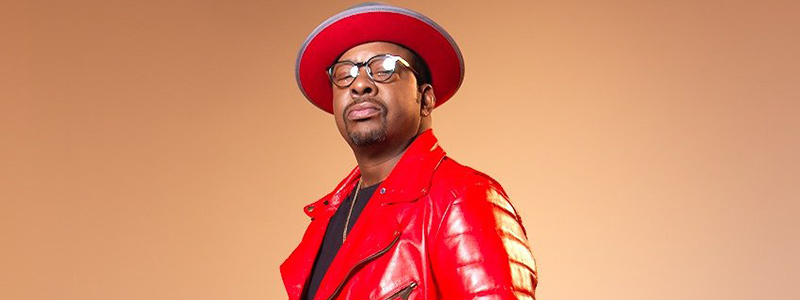
Bobby Brown, born in Boston in 1969, is an iconic American singer, actor, and former member of the R&B group New Edition. He shot to solo stardom with his 1988 album “Don’t Be Cruel,” featuring chart-topping hits like “My Prerogative” and “Every Little Step,” and left an indelible mark on the music world by blending R&B with hip-hop, pop, and funk. Beyond music, he ventured into acting and garnered media attention for his high-profile marriage to Whitney Houston. Brown’s enduring influence on contemporary R&B solidifies his status as a beloved and influential figure in the music industry.
FOLLOW BOBBY BROWN ON SOCIAL

Durrell Artaze Babbs, known by his stage name Tank, is a highly influential R&B singer and songwriter hailing from Milwaukee, Wisconsin. Born on January 1, 1976, Tank has solidified his status as a prominent figure in the realm of contemporary R&B. With his soulful and emotionally charged vocals, he has cultivated a dedicated fan base and garnered critical acclaim. Beginning his music career in the late 1990s, Tank has consistently delivered a series of chart-topping albums and hit singles, including tracks like “Maybe I Deserve,” “Please Don’t Go,” and “When We.” Renowned for his unique ability to seamlessly fuse smooth, seductive melodies with heartfelt lyrics, Tank remains a respected and enduring presence in the world of R&B, continuously shaping the genre with his distinctive voice and artistic versatility.
FOLLOW TANK ON SOCIAL
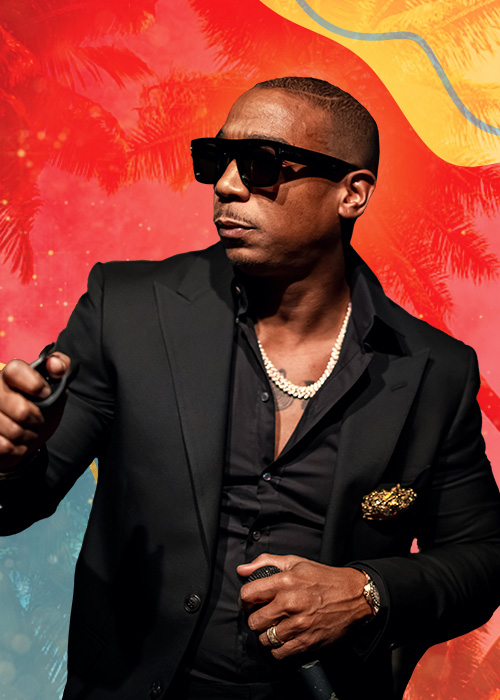
Jeffrey Bruce Atkins (born February 29, 1976) a leap year child, better known by his stage name Ja Rule , is an American rapper. Born and raised in Hollis Queens. Atkins began his rap career in 1994 with the hip hop group Cash Money Click alongside members Chris Black and O-1. He took the stage name “Ja Rule”. Together they worked with DJ Irv to produce a number of songs, releasing their debut single “ Get Tha Fortune “ independently in 1994. In 1998 he wrote a single which was picked up and recorded with Jay- Z “ Can I Get A ” which was featured on the Rush Hour Soundtrack.
Ja Rule has received many accolades for his musical endeavors – 2002 he received the BET Award for Best Male Hip-Hop Artist – from GQ he won the Musician of the Year – MTV Best Hip-Hop Video – NAACP Image Awards, he won for Best Rap/Hip-Hop Artist. As an artist, he has always been generous and has many respective collaborators most notable Ashanti, Jennifer Lopez, Mary J Blige, Jay-z, DMX, R. Kelly, Bobby Brown, Missy Elliot, Christina Milian, Charli Baltimore, Black Child, Caddilac Tah Murda, Lil Mo, Vita and Case to name a few.
Following the release of his debut album “ Venni Vetti Vecci ” (1999), and its lead single “ Holla Holla ”, the album was Certified Platinum July 1999. He released his respective second album “ Rule 3:36 ” (2000), the album was a commercial success, selling 276,000 copies during its first week of release and debuting at number one on the Billboard 200. Kicking off chart topping hits “ Between Me and You ”, “ Put It On Me “and “ I Cry ”. He followed this with a couple of singles with Jennifer Lopez “ I’m Real ” – “ I’m Real – Murder Remix ” and “ Ain’t That Funny “ all of which placed in Billboard top 20. His 3 rd released album came right behind this successful movement in October 2001 titled “ Pain Is Love ” on this album he delivered “ Living It Up ”, “ Down Ass Chick ” and the Billboard No 1 hit “ Always On Time ”. Both albums topped the US Billboard 200 album chart, launching him into the mainstream, selling over a combined 15 million units to a worldwide audience. Ja Rule followed up with his respective fourth, fifth and sixth albums “ The Last Temptation” (2002), “ Blood in My Eye” (2003), and “ R.U.L.E ”. (2004), with “ The Last Temptation” attaining platinum status and “ R.U.L.E. “ reaching gold status. As of 2018, Ja Rule has sold 14.4 million units in the US and has sold over 30 million records worldwide.
In between his very successful music career he was able to work on 4 Movie Soundtracks and about 20 movies. Most Notable “Fast and the Furious”, “Cookout”, “Scary Movie”, “Assault on Precinct 13”, “Cookout 2” and “I’m In Love with a Church Girl” to name a few as well as many TV shows Most notable “Follow the Rules” and “Growing up Hip Hop – New York”,
In 2023, Ja Rule is the curator of the Iconic Vibes concert series, which celebrates the legendary Rappers in a signature one night only live band performance, which can be viewed on his https://iconn.live/ or in your App store. He is involved in bringing his Roses Wines to consumers and is instrumental in the creative for other products in development currently, Ja Rule is an Innovative Creative Entertainer whom we most certainly have not heard everything from yet.
FOLLOW JA RULE ON SOCIAL

Kirk Franklin
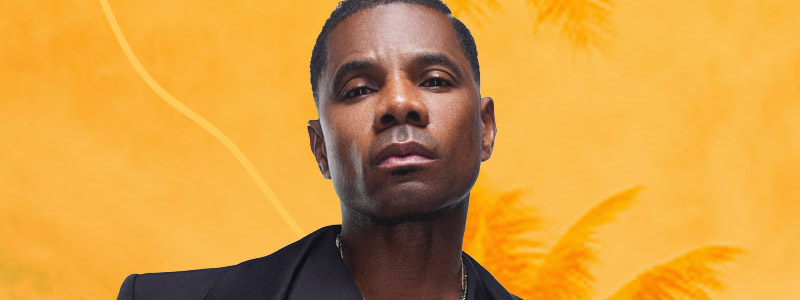
With a celebrated career spanning 30 years, Kirk Franklin continues to make a profound mark on the music industry. The eclectic 19-time GRAMMY Award-winning artist, songwriter, music producer, and television and film producer has successfully bridged the gap between gospel, R&B, hip-hop, and pop as he continues to take his career and craft to new levels. It’s no doubt that Franklin’s God-given talent and deep faith have helped him remain the influential, relevant, and visionary he is today.
Franklin is back with his 14 th and most personal and reflective studio album yet, titled Father’s Day. The album, slated to be released in early October from his RCA-distributed label, Fo Yo Soul Recordings, is a collection of 10 inspirational, beautifully curated tracks (all written by Franklin) with the constant theme of love, faith, and resilience flowing through them. Father’s Day will be accompanied by a short film that will be released a few days before the album and provide a deeper context to what Father’s Day means for Franklin.
Making the album wasn’t exactly easy for the artist. While creating Father’s Day , the man Franklin grew up thinking was his father (whom he didn’t have the best relationship with) passed away, and shortly after that, he discovered his real biological father after a series of DNA tests. This was one of the most traumatic experiences Franklin had to go through, and someone else in the same position might have faltered. But for Franklin, who had his fair share of ups and downs throughout his life, his music and heavenly father God helped him get through this latest storm and also helped him come up with the name of the album. “I have no idea how I was able to finish this album with all that was going on at the time. But I know that I would have been in an even worse troubling state if I wasn’t working on it. Father’s Day gave me an escape and an emotional outlet,” he admits.
The lead single, “All Things,” released in May 2023 with an official video, is a bold, upbeat, soul-stirring track that is a reminder that God is what makes everything and all things possible. The second single, “Try Love,” which will be released in late August, is an uplifting song with a rousing chorus that goes: “ This is your day love/This is the day that you can’t give away love/ I’ve been waiting all day love/Waiting for your embrace love,” before switching gears midway into a funky R&B throwback. “Needs” is an authentic, comforting gospel ballad that delves into the need of God in one’s life. Gospel royalty such as Chandler Moore, Tori Kelly, Jonathan McReynolds, and Jekalyn Carr join Franklin on the exhilarating track “Again,” while Kelontae Gavin and Maranda Curtis lend their vocals to its sequel “Again & Again,” with both songs rejoicing in how no matter what, God will continuously move mountains for you. Franklin closes out the album with “Somebody’s Son” a deeply moving and touching song where he candidly expresses the heartbreak and pain he’s felt throughout his life (especially most recently) due to the familial trauma he’s endured.
Franklin hopes the album resonates with people and gives them permission to accept the highs and lows of life while still understanding that God is always there for them. “For many people, the image of God is Him always keeping score of their wrongdoings. So there’s some fear when it comes to their relationship with God,” he says. “I hope this album is a stripped-down, honest conversation about the difficulty of the life journey and how life can be messy, nuanced, and a matter of trial and error even for those who subscribe to faith. But it’s all wrapped in a bow of love, and that love doesn’t always make sense, but is always constant.”
Since bursting onto the scene in 1993 with the release of his critically acclaimed debut album Kirk Franklin & The Family, Franklin has blessed the world with hit after hit, a bevy of award-winning, lauded albums (in addition to multiple GRAMMYs, he has garnered nearly 40 Stellar Awards and is a 22-time Dove Award winner), and a plethora of epic collaborations with artists such as Mariah Carey, Lil’ Baby, Chance the Rapper, Justin Timberlake, Justin Bieber, Demi Lovato, Khalid, and Michael Jackson. His most recent album, Kingdom Book One (Tribl Records, Fo Yo Soul Entertainment, and RCA Inspiration), a live, collaboration album with the gospel group Maverick City Music, was recorded at the Everglades Correctional Institution in Miami-Dade, Florida, to raise awareness on the injustice of mass incarceration and debuted at number two on Billboard’s Top Christian Albums chart and the Top Gospel Albums chart. The album also received three GRAMMY Awards, a BET Award, and NAACP Image Award. In March 2023, Franklin made history by spending 100 weeks at No. 1 on Billboard’s Gospel Songwriters Chart and becoming the first person to reach the 100-week milestone on a songwriters chart.
In addition to his music awards and accolades, Franklin’s 2022 tour with Maverick City Music broke records as one of the highest-grossing tours in the history of gospel and Christian contemporary music. This fall, Franklin will hit the road again with The Reunion Tour, which will feature Israel Houghton, David and Tamela Mann, Tye Tribbett, and The Clark Sisters, and kick off in Boston with stops in 29 cities across the country.
Making hit records and selling out concerts isn’t the only thing Franklin has mastered. He has served as an executive producer for two popular holiday films such as Kirk Franklin’s The Night Before Christmas in 2022 and Kirk Franklin’s A Gospel Christmas in 2021 and also served as an executive producer for the BET+ television series “Kingdom Business” in 2022, which was renewed for a second season. In addition to that, Franklin and his wife, Tammy Franklin, premiered their new dating series “The One,” on TV One this past May and served as co-hosts and executive producers. Franklin is now shopping a few more projects around and plans to continue working on unscripted and scripted programming. “I’ve been very excited about being part of these projects,” says Franklin. “I still enjoy doing music, but I’m very grateful to be used by God to bring his name to the conversation and use the vehicle of entertainment to do it.”
For Kirk Franklin, his iconic songs, unforgettable verses, and undeniable showmanship have made him the star and household name he is. Still, he remains humble and extremely grateful to be blessed to share his passion for music with the world. Right now he is in the healing process, and the music gives him the strength to persevere. And yes, the past several months have been a trying time for the renowned artist, but at the same time he is excited about the release of Father’s Day . “The Lord has been super kind to me. This album is an opportunity for me to escape and an opportunity to communicate what I may not always emotionally be able to say,” he says. “This album has been a lifesaver God has blessed me with, and I am truly grateful.”
FOLLOW KIRK FRANKLIN ON SOCIAL
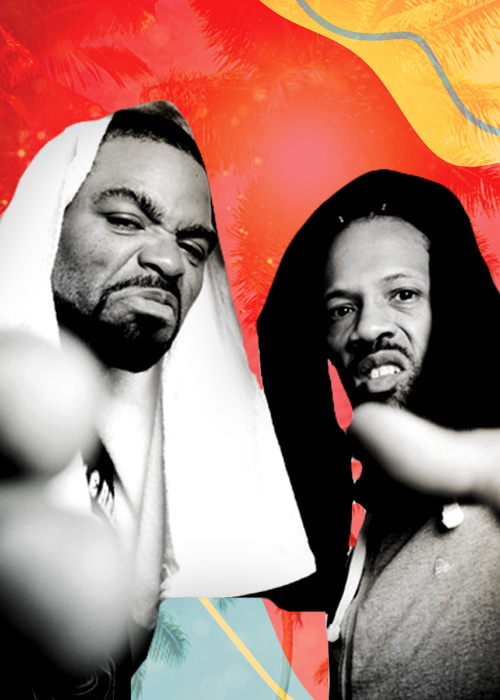
Method Man & Redman
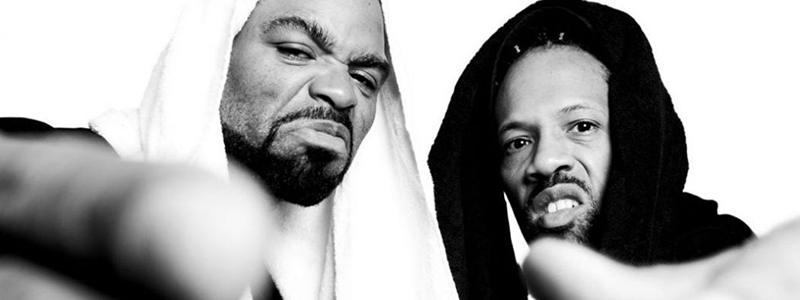
Method Man & Redman (also referred to as Meth & Red, Red & Mef, John Blaze and Funk Doc or Funk Doctor Spock and Johnny Blaze) are an American hip hop duo, composed of East Coast rappers Method Man (of Wu-Tang Clan) and Redman (of Def Squad). They are signed to Def Jam Recordings both as solo artists and as a duo.
FOLLOW METHOD MAN ON SOCIAL
FOLLOW REDMAN ON SOCIAL

Ashanti is a GRAMMY® Award-winning singer/songwriter, actor and author, who burst onto the music scene with her smash hit, self-titled debut album Ashanti. The album landed the #1 spot on both the Billboard Top 200 and R&B album charts, selling a whopping 504,593 units in its first week and set a SoundScan record as the most albums sold by any debut female artist in the chart’s history, granting her a spot in the Guinness Book of World Records, which she still holds today. Ashanti has released six studio albums and received eight Billboard Awards, a GRAMMY, two American Music Awards, two Soul Train Awards, six ASCAP Awards, and many more awards and illustrious honors. Ashanti has continued to reign at the top as one of Billboard’s “Top Females of the Decade from 2000-2010” and continues to break Billboard records as having a Hot 100 entry in the 2000’s, 2010’s and 2020’s.
In 2005, Ashanti made her telefilm debut starring as Dorothy in The Muppets’ Wizard of Oz , opposite Miss Piggy and Kermit. She also starred in the Disney animated series The Proud Family and continued to receive roles in Buffy the Vampire Slayer, Army Wives , Sabrina, the Teenage Witch , and portrayed Dionne Warwick on NBC’s American Dreams . She has also played herself and performed on the hit TV series, Vegas .
In her feature film debut in Coach Carter , Ashanti co-starred with Samuel L. Jackson, and the film was a #1 box office hit. Ashanti’s other film credits include Resident Evil Extinction, John Tucker Must Die and Bollywood film Bride & Prejudice . Ashanti executive produced, starred in the musical drama and feature film STUCK , released April 2019. She also executive produced the feature film Mothers and Daughters , starring Sharon Stone, Susan Sarandon, Mira Sorvino and more.
Ashanti recently starred in Honey Girls , in partnership with Build-A-Bear Entertainment and Sony Pictures’ rom-com The Plus One , that she will Executive Produce and star in, alongside Cedric the Entertainer, released September 29, 2023. Ashanti will also star in No Address , a film about a group of people that are experiencing homelessness and realize they must bond together as a family if they are going to survive, to be released in 2024.
Ashanti has built her brand with several major partnerships and has her own fragrance, “Precious Jewel” with AMC Beauty, American Express, Shea Moisture and Ciroc, to name a few. Her endorsements include Herbal Essences , where she is the first African American to land a national campaign, and Candies Apparel . She launched her clothing line in collaboration with Miss Circle and partnered with Pretty Little Thing to create her own swimsuit line “Ashanti.”
She has written her first book of poetry through Hyperion titled Foolish/Unfoolish: Reflections on Love and released her first children’s book, My Name Is A Story , with Harper Collins on July 12, 2022. My Name Is A Story was voted, “2023 Best Children’s Book” by the African American Literary Awards.
To celebrate her contributions to music and recording, Ashanti received a star on the Hollywood Walk of Fame on April 7, 2022.
FOLLOW ASHANTI ON SOCIAL
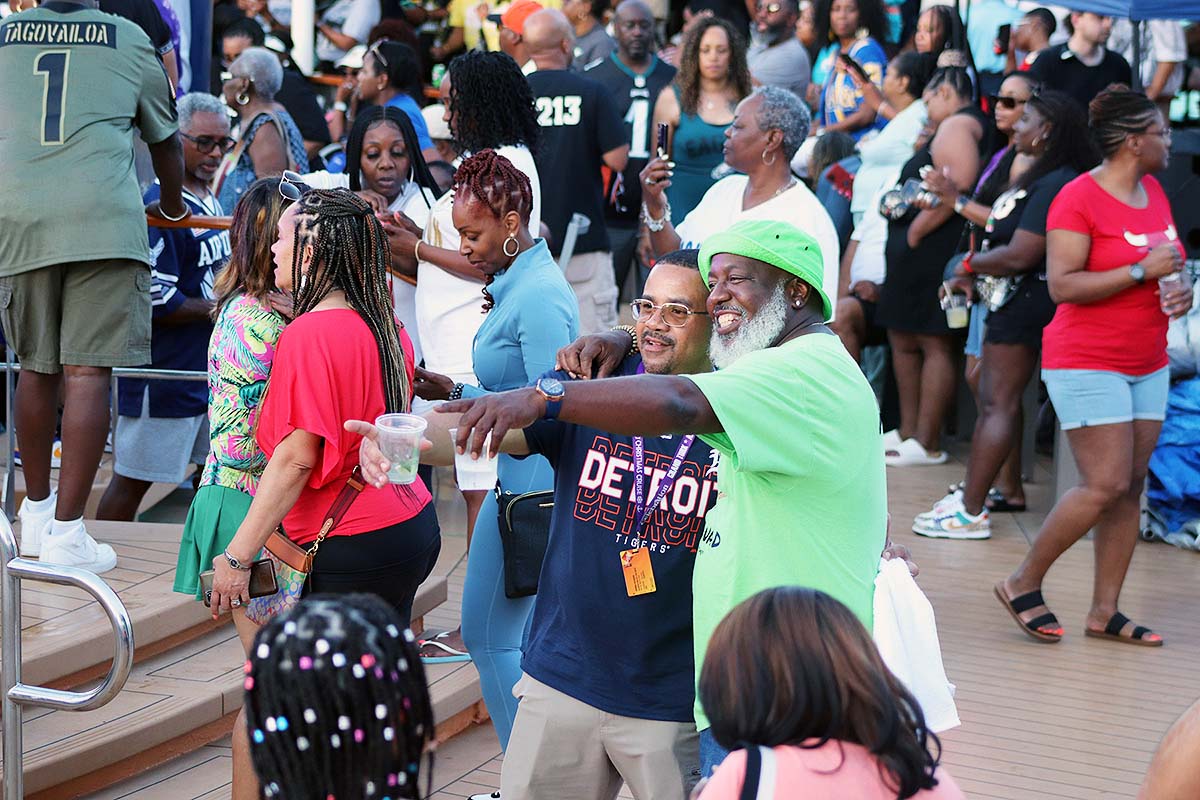
*All itineraries, dates and times, vessel, ports, artists, performers, appearances, locations, etc. are subject to change without notice.
**Consult with your accountant or preparer regarding the tax-deductible donation.
Artists suggestions based on your preferences
Filter by media, style, movement, nationality and activity period
Search artists by name or category
Detailed results for millions of lots
Overall performance of recent notable sales
Browse all types of artworks for sale
Notable sales happening this month
Buy unsold paintings, prints and more for the best price
Upcoming exhibitions at your preferred locations
Global snapshot, top performers and top lots
Charts on artist trends and performance over time, ready to export
Get your artworks appraised online in 72 hours or less by experienced IFAA accredited professionals
Get the best price for your artwork or collection.
We notify you each time your favorite artists feature in an exhibition, auction or the press
Access detailed sales records for over 747,000 artists, and more than two decades of past auction results

- Salvador Dalí
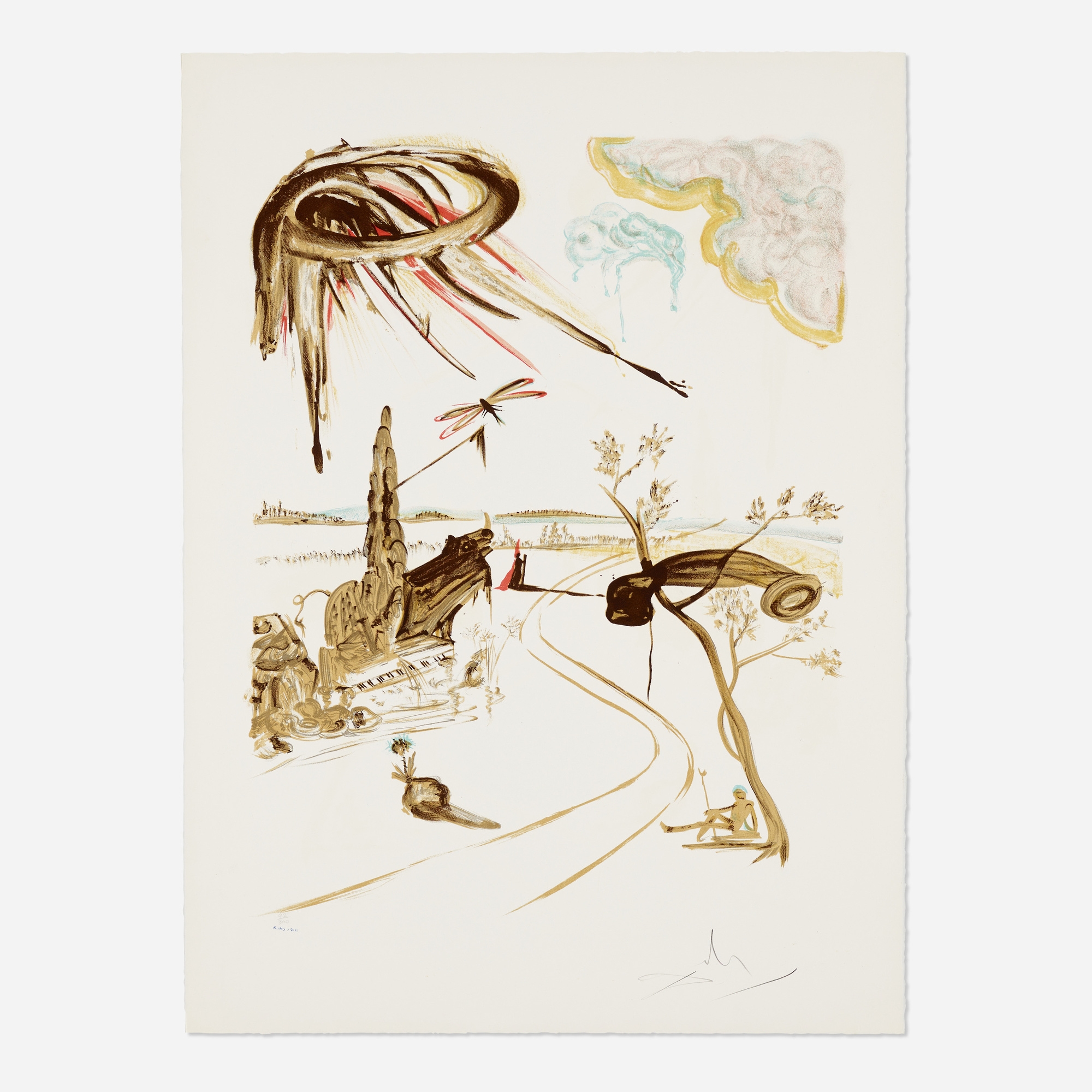
Salvador Dalí
Fantastic voyage , 1965.
lithograph in colors
Prints & Graphic Art
Signed, number 92 from the edition of 300
Repeated Sales
Similar lots to this artwork.
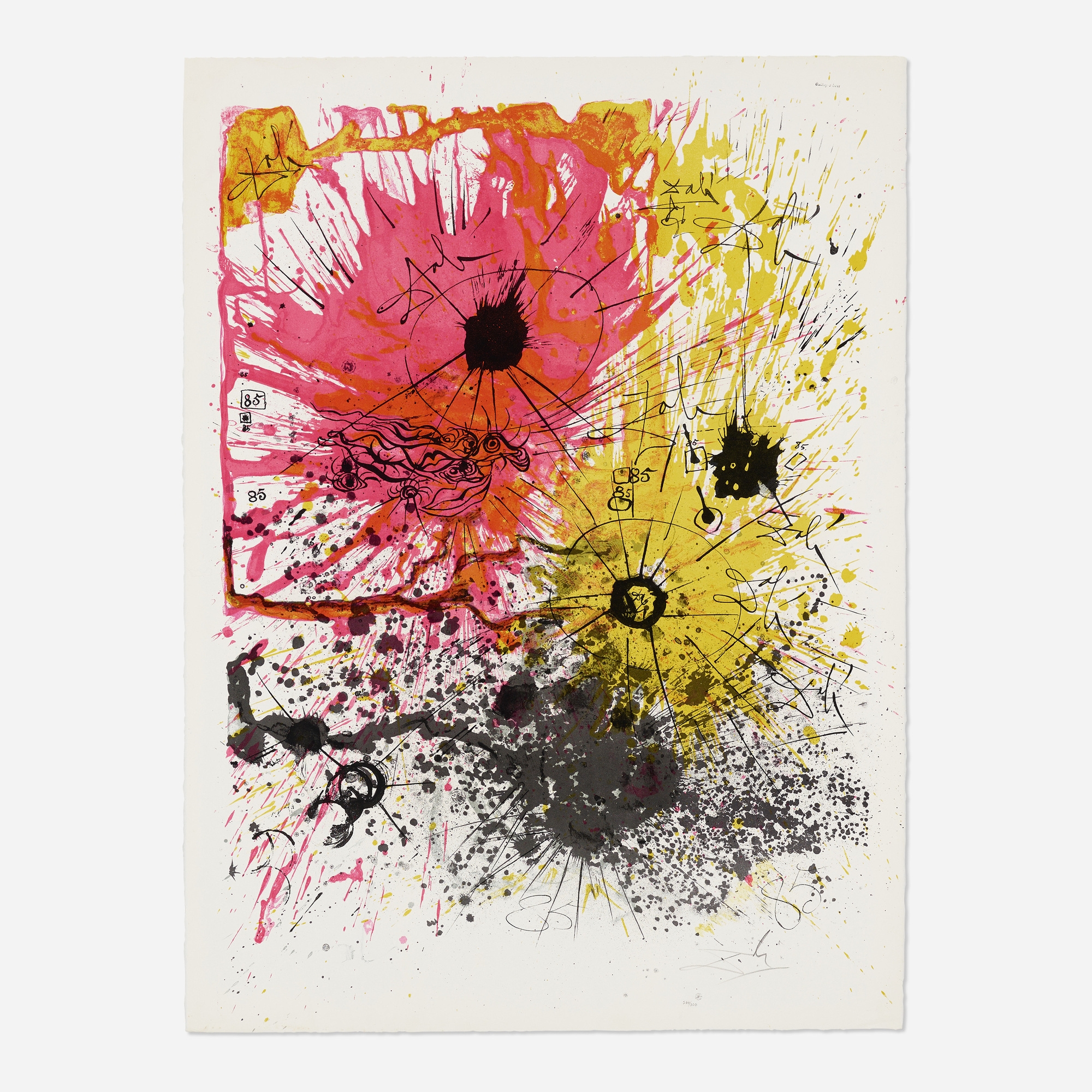
Lucky Number of Dalí ,1965
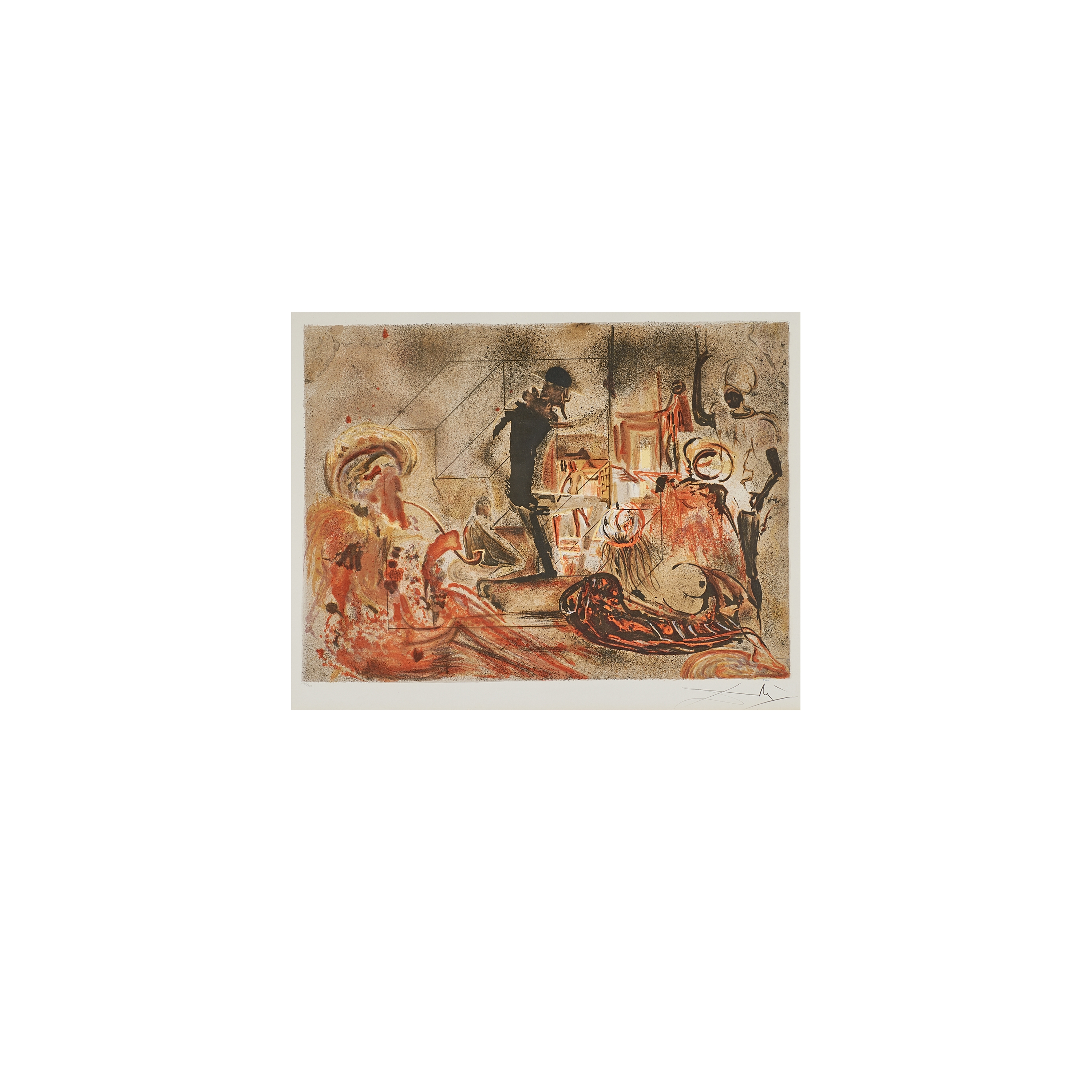
Studio of Dali ,1965

Auvergne ,1964
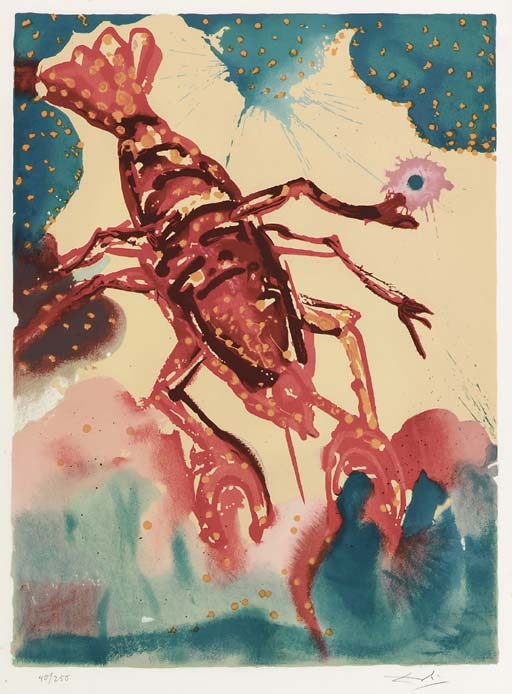
Nicolas Sokoloff, The Twelve Signs of the Zodiac, Paris and New York, Léon Amiel (Michler and Löpsinger 1181-92) ,1967
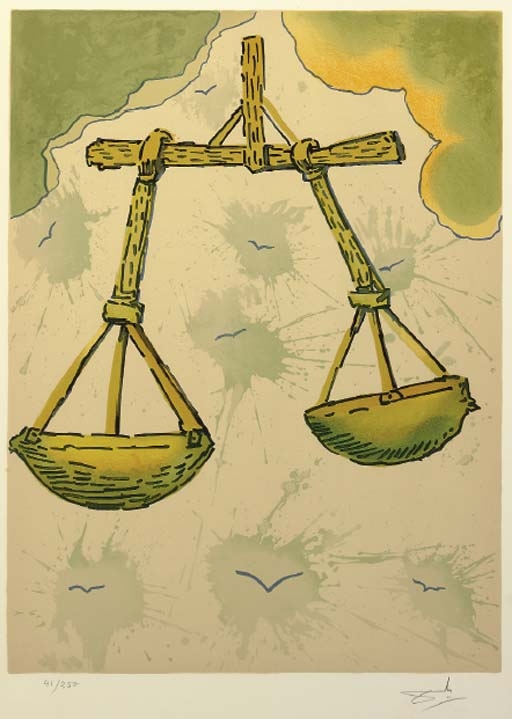
Nicolas Sokoloff, The Twelve Signs of the Zodiac, Paris and New York, Léon Amiel ,1967
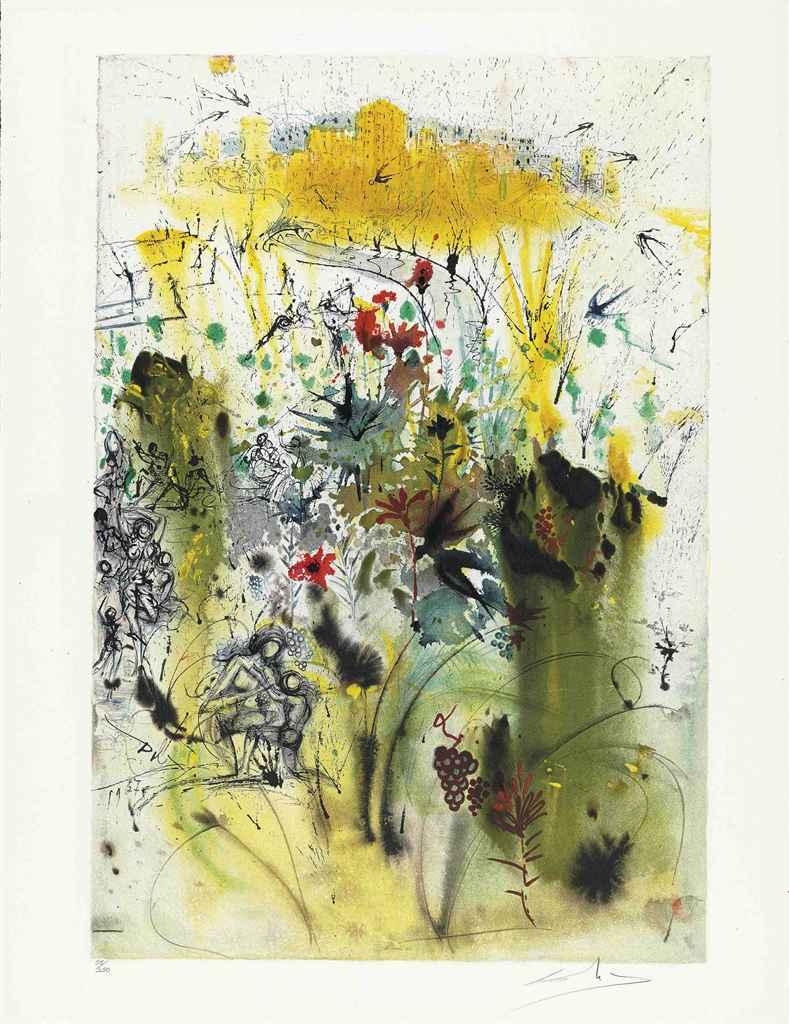
Twenty five works : Aliyah ,1968
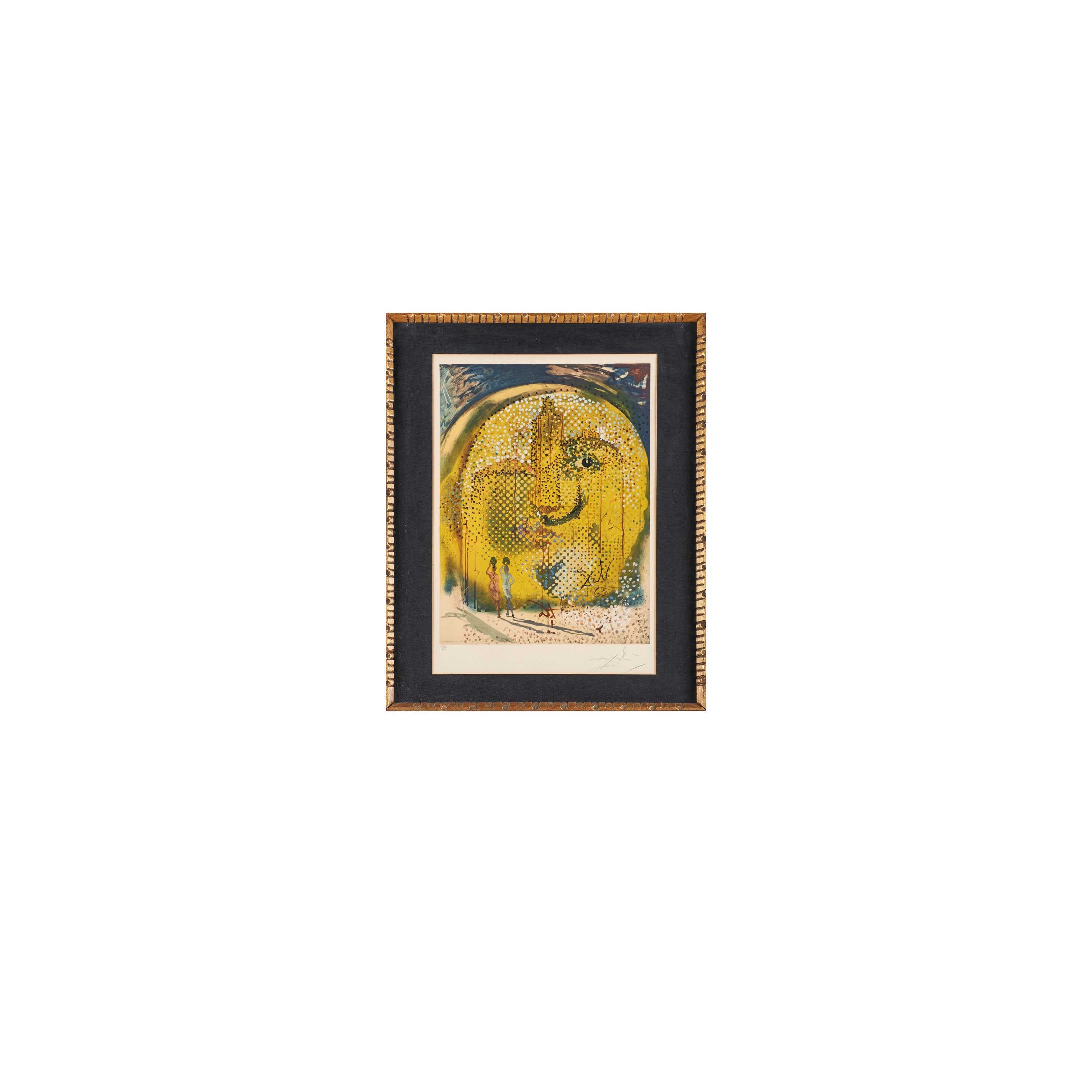
Sol y Dali ,1967
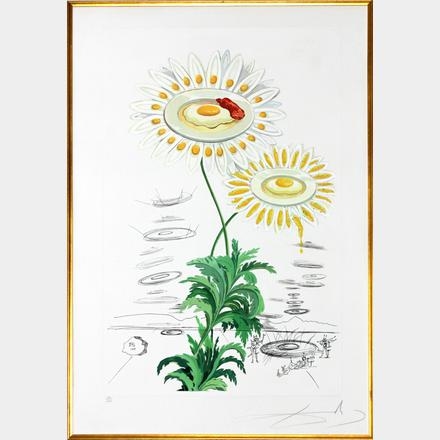
Chrysanthemum Frutescens ,1968
More lots by salvador dalí in this sale.
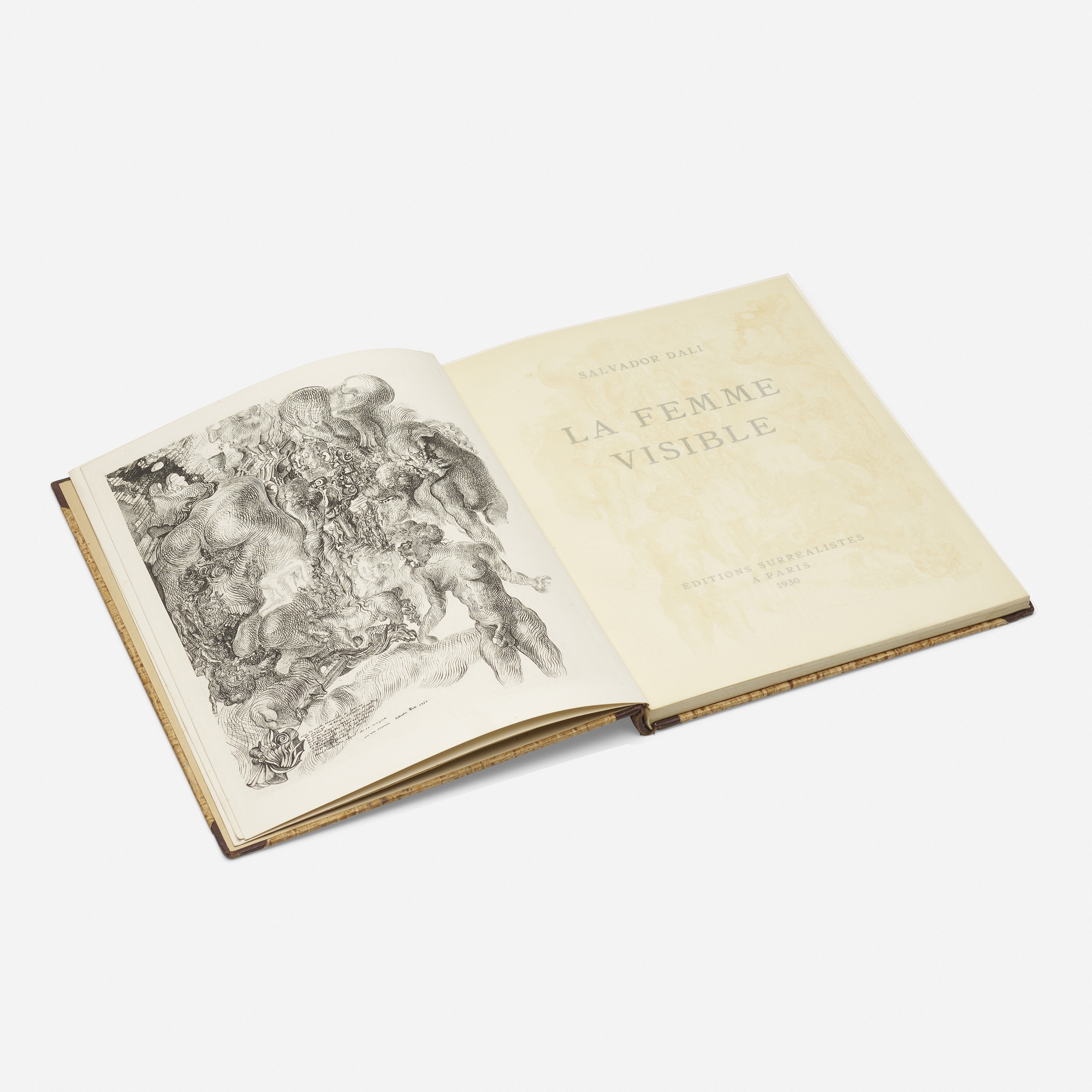
La Femme Visible
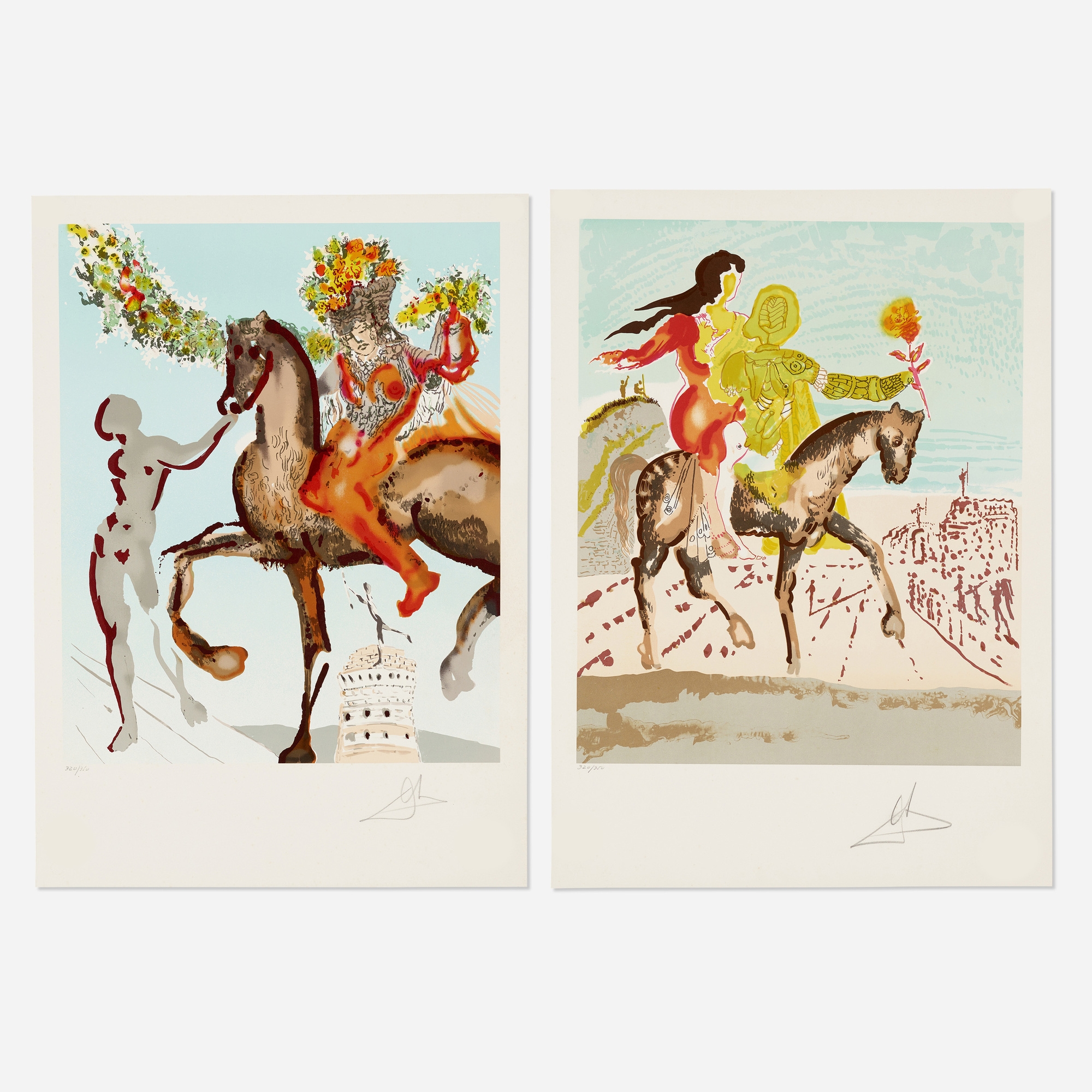
New Jerusalem

Lucky Number of Dalí
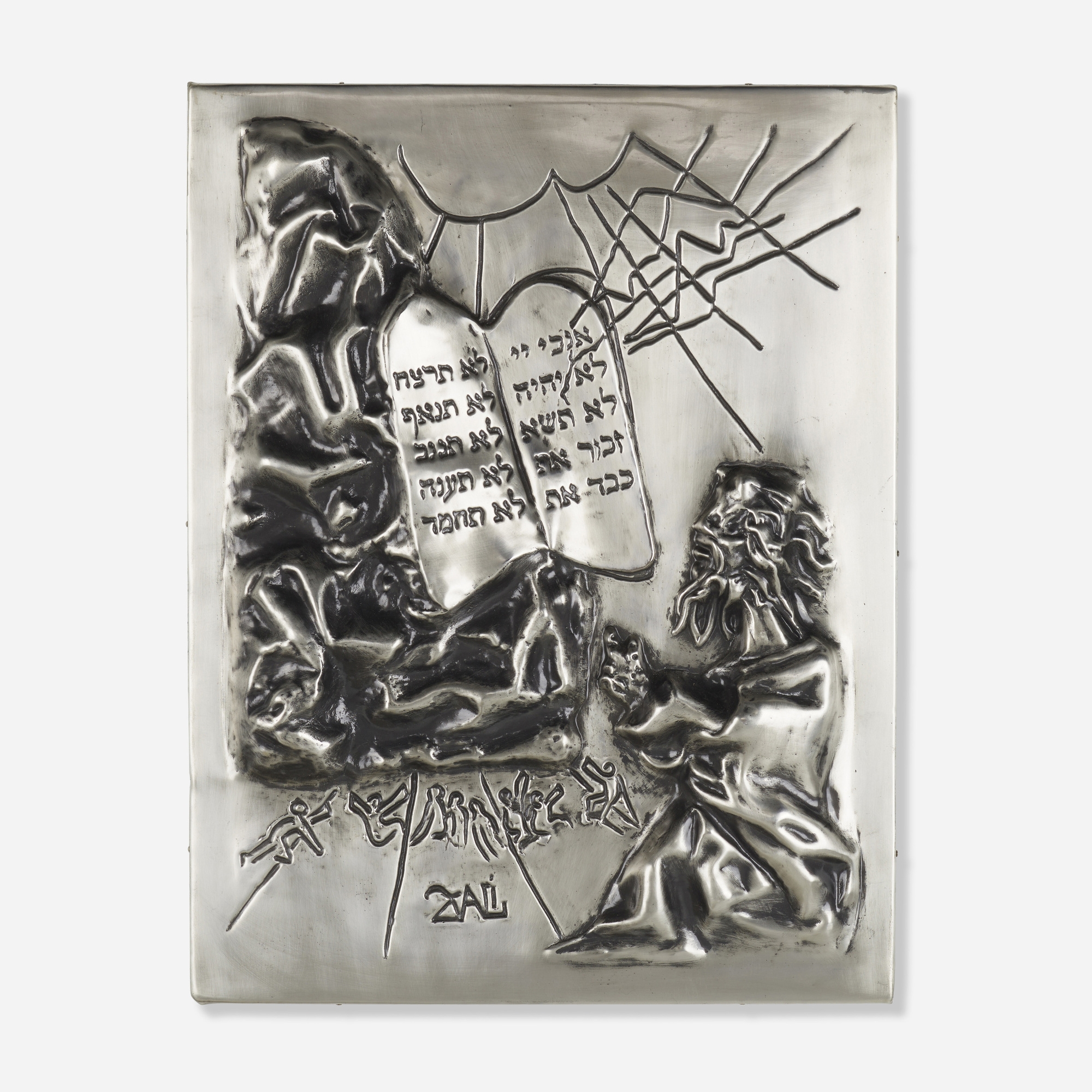
Ten Commandments
Recent lots by salvador dalí.
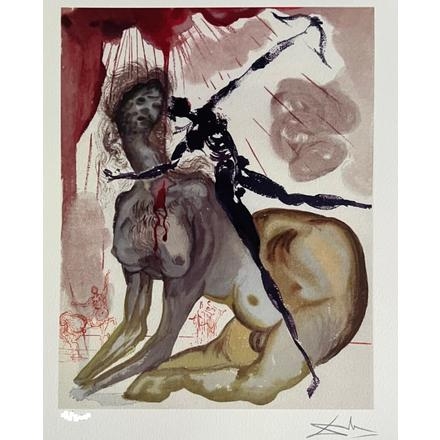
Divine Comedy - Salvador Dalí
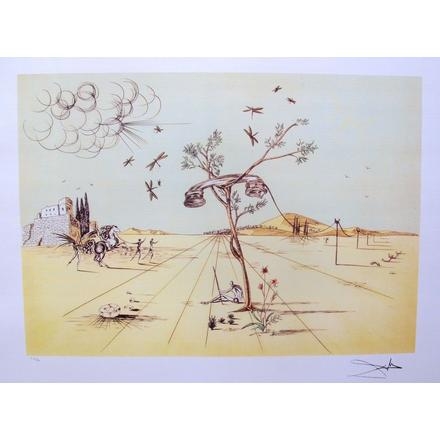
Disembodied Telephone in the Desert - Salvador Dalí
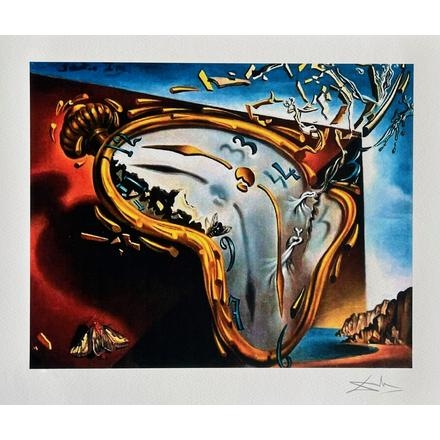
SOFT WATCH EXPLOSION - Salvador Dalí
Artist performance, prints & graphic art lot performance, performance vs. estimate, average & median sold lot value 2019-2024, sell-through rate 2019-2024.
- Not Sold : 48.5%
- Below : 18.2%
- Within : 13.2%
- Above : 20.2%
Lot Performance Against Estimates 2023
Average price yoy growth 2022 - 2023, average lot values (and yoy change) 2023.

- Inscription
Salvador DALI - Fantastic Voyage
Présenté par fine art acquisitions.
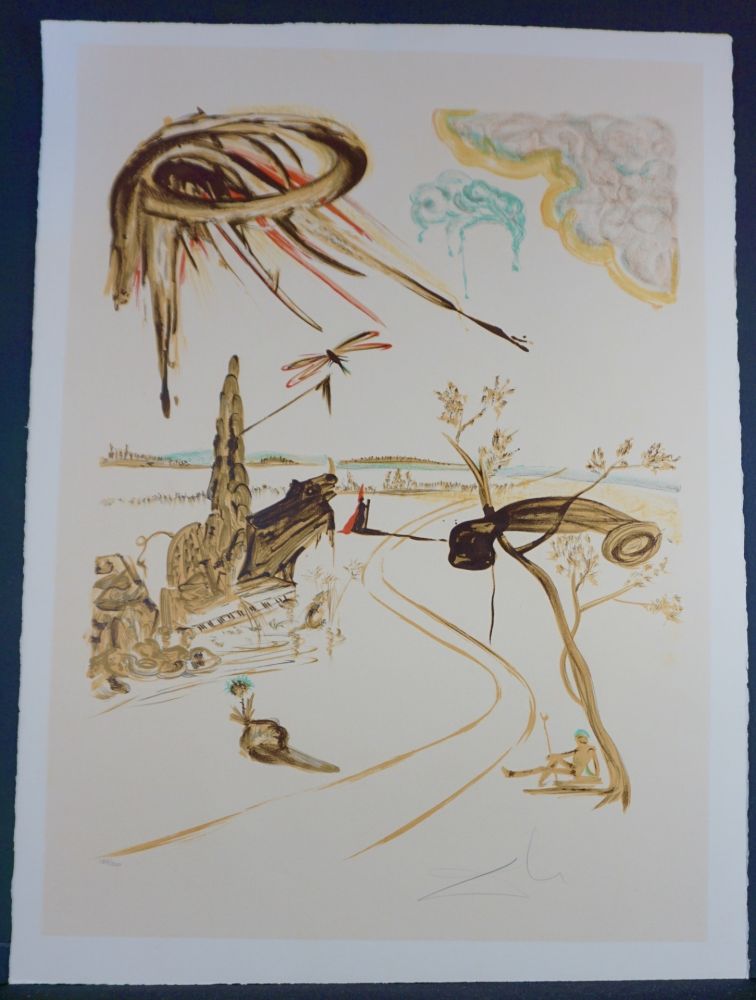
- Technique Lithographie
- Dimensions de l'image 0,0 x 0,0 cm / 0.0 x 0.0 in
- Dimensions du papier 76,2 x 55,9 cm / 30.0 x 22.0 in
- Tirage 139/300
- Prix Sur demande
- Référence The Official Catalog of The Graphic Works of Salvador Dali by Albert Field page 148 #65-4
- Visite(s) 561
FINE ART ACQUISITIONS 954-217-0993 [email protected] ARTIST: Salvador Dali TITLE: Fantastic Voyage MEDIUM: Lithograph SIGNED: Hand Signed EDITION NUMBER: 139/300 MEASUREMENTS: 32" x 21" YEAR: 1965 CONDITION: Excellent
ESTAMPES DISPONIBLES DE DALI
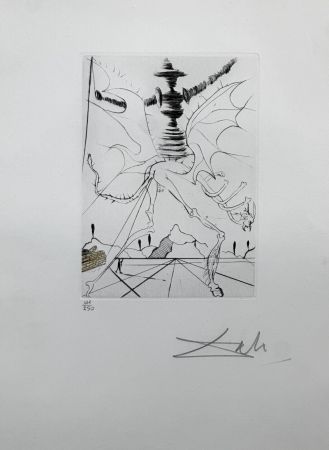
- Shakespeare II Henry…
- Fine Art Acquisition…
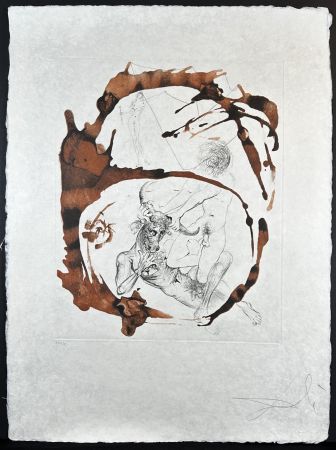
- The Mythology Thesus…
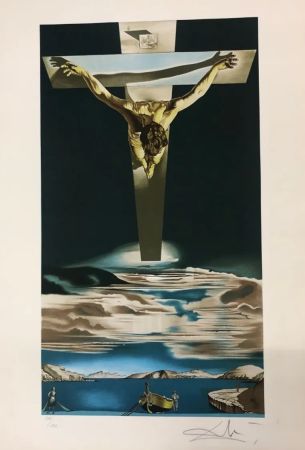
- Cristo de San Juan d…
- Galería La Aurora
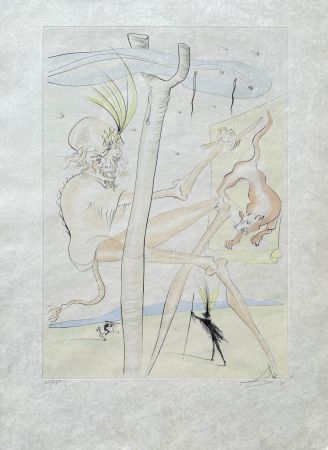
- Le singe et le léopa…
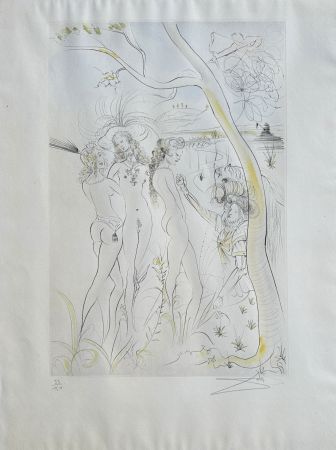
- Le jugement de Paris
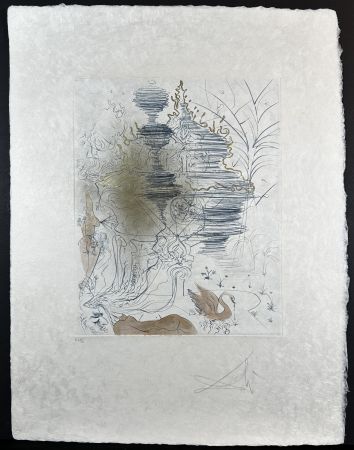
- The Hippies The Pago…
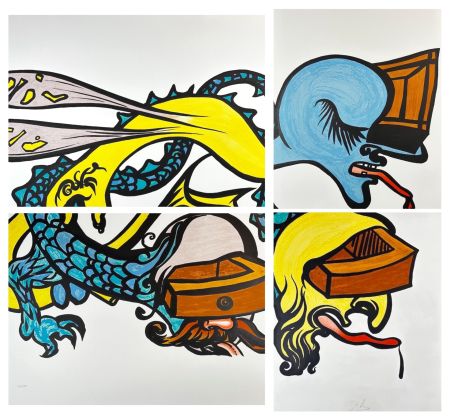
- Vitraux in Four Shee…
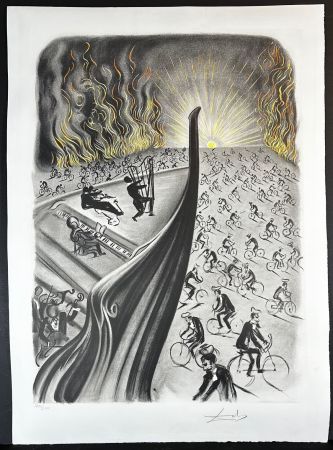
- Symphony Bicyclette
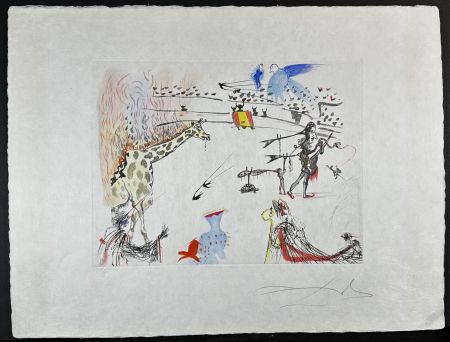
- Tauramachie Surreali…
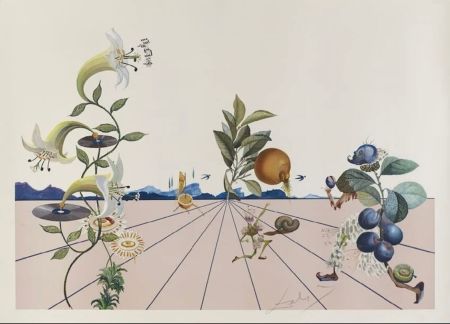
- Composition.gallery
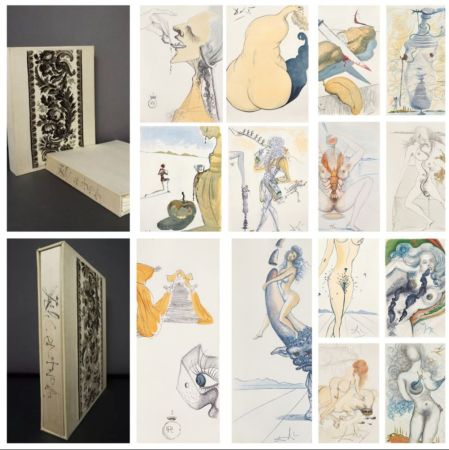
- Illustre Casanova
Search SFE Search EoF
Omit cross-reference entries
Fantastic Voyage
Entry updated 10 November 2023. Tagged: Film, TV.

1. Film ( 1966 ). Twentieth Century Fox. Directed by Richard Fleischer. Written by Harry Kleiner, based on a story by Otto Clement and J Lewis (i.e., Jerome) Bixby adapted by David Duncan . Cast includes Stephen Boyd, Edmund O'Brien, Donald Pleasence and Raquel Welch. 100 minutes. Colour.
A submarine carrying a crew of medical experts – including a double-agent saboteur (Pleasence) – is Miniaturized by Ray treatment at the US Combined Miniaturized Deterrent Forces facility and injected into the bloodstream of an important Scientist (a Soviet defector in the Cold War context) in order to remove by laser surgery a blood-clot from his brain. Owing to various accidents they deviate from the intended course, leading to such desperate expedients as the temporary stopping of the patient's heart to allow a turbulence-free passage for the tiny submarine, and a side-trip to the lungs for additional oxygen supplies. Despite sabotage and other obstacles the blood clot is successfully lasered, only for the submarine to be attacked and destroyed by the immune system's implacable white blood cells. In the finale – a swimming race to escape before the team reverts to full size while still inside the body – they exit via a tear duct with only seconds to spare. The special effects by L B Abbott, Art Cruickshank and Emil Kosa Jr are impressive, as are the sets – duplicating in giant size various organs of the body, such as the heart, lungs and brain – designed by art director Dale Hennesy with spectacular histological surrealism. This vivid spectacle, however, does not compensate for the ham acting, the irrelevance of the lingered-on breasts of surgical assistant Cora Peterson (Welch), and the sometimes puerile melodrama.
The novelization was Fantastic Voyage ( 1966 ) by Isaac Asimov , who doggedly repaired such filmic lapses as the abandoning of the wrecked submarine (and saboteur) within the patient's body where it would of course expand disastrously to full size. A film using a very similar theme is Joe Dante 's Innerspace ( 1987 ). [PN/JB/DRL]
2. US animated tv series ( 1968-1970 ). Filmation Associates with 20th Century Fox Television for the ABC-TV network. Produced by Loc Scheimer and Norm Prescott. Directed by Hal Sutherland and Anatole Kirsanoff. Writers include Jerome Bixby , Eric Blair, David Melmuth, and Ken Sobol . Cast includes Ted Knight, Marvin Miller and Jane Webb. Narrator: Knight. 17 30-minute episodes. Colour.
A super-secret agency, the Combined Miniature Defence Force (CMDF), oversees the missions of the Voyager , a winged submarine, whose crew faces various threats when they and their ship are miniaturized to microscopic level in twelve-hour stints (see Great and Small ). Led by Commander Jonathan Kidd (Knight), the crew includes the submarine's designer Bushy Birdwell (Miller), Dr Erica Lane (Webb), and Guru (also Miller) a Tibetan wizard with mild powers of Telekinesis . The Voyager faces various threats including espionage from hostile foreign powers, and unfriendly Aliens as well; missions inside the human body are rare.
More a spin-off from Fantastic Voyage ( 1 above) than a sequel, the series was reportedly originally meant to be a live-action programme developed by teleplay authors William Read Woodfield and Allan Balter. This idea was scrapped, presumably due to cost considerations; 20th Century Fox settled instead for an animated series slanted towards younger audiences, with an entirely new crew. Tie merchandise was limited to a short-run plastic model kit from Aurora Model Company produced near the series' conclusion. Fantastic Voyage was one of the first science fiction offerings from Filmation Associates, which – with Hanna-Barbera , and Sid and Marty Krofft Productions – would dominate US juvenile programming in both live-action and animated television throughout the 1970s. [GSt]
- Internet Movie Database – 1966 film
- Internet Movie Database – 1968-1970 animated tv series
- Wikipedia episode list
previous versions of this entry
- Internet Archive
- Cast & crew
- User reviews
Fantastic Voyage

When a blood clot renders a scientist comatose, a submarine and its crew are shrunk and injected into his bloodstream in order to save him. When a blood clot renders a scientist comatose, a submarine and its crew are shrunk and injected into his bloodstream in order to save him. When a blood clot renders a scientist comatose, a submarine and its crew are shrunk and injected into his bloodstream in order to save him.
- Richard Fleischer
- Harry Kleiner
- David Duncan
- Otto Klement
- Stephen Boyd
- Raquel Welch
- Edmond O'Brien
- 149 User reviews
- 82 Critic reviews
- 72 Metascore
- 4 wins & 6 nominations total

- Cora Peterson

- General Carter

- Dr. Michaels

- Col. Donald Reid

- Capt. Bill Owens

- Communications Aide

- Secret Service

- Wireless Operator

- Military Policeman
- (uncredited)

- Dr. Sawyer - Hypothermia Technician

- Henry - Heart Monitoring
- Young Scientist
- All cast & crew
- Production, box office & more at IMDbPro
More like this


Did you know
- Trivia Medical schools, at least as late as the 1980s, showed clips from this movie to illustrate various concepts in human anatomy, physiology, and especially immunology.
- Goofs If the crew members can swim from the brain to the eye in around a minute, why didn't they enter from the eye?
[as the submarine enters the brain]
Dr. Duval : Yet all the suns that light the corridors of the universe shine dim before the blazing of a single thought...
Grant : ...proclaiming in incandescent glory the myriad mind of Man.
Dr. Michaels : Very poetic, gentlemen. Let me know when we pass the soul.
Dr. Duval : The soul? The finite mind cannot comprehend infinity, and the soul, which comes from God, is infinite.
Dr. Michaels : Yes, but our time isn't.
- Alternate versions The DVD edition has the following prologue: "The makers of this film are indebted to the many doctors, technicians and research scientists, whose knowledge and insight helped guide this production" The TV/Video version features this prologue instead: "This film will take you where no one has ever been before; no eye witness has actually seen what you are about to see. But in this world of ours where going to the moon will soon be upon us and where the most incredible things are happening all around us, someday, perhaps tomorrow, the fantastic events you are about to see can and will take place."
- Connections Edited into Attack of the 50 Foot Monster Mania (1999)
User reviews 149
- Jan 13, 2015
- How long is Fantastic Voyage? Powered by Alexa
- Wasn't this movie based on an Isaac Asimov tale?
- When do they get injected into the patient's body?
- September 23, 1966 (Japan)
- United States
- Microscopia
- Los Angeles Memorial Sports Arena - 3939 S. Figueroa Street, Los Angeles, California, USA (interior corridors of CMDF headquarters traversed by golf carts and people walking)
- Twentieth Century Fox
- See more company credits at IMDbPro
- $5,115,000 (estimated)
Technical specs
- Runtime 1 hour 40 minutes
Related news
Contribute to this page.

- See more gaps
- Learn more about contributing
More to explore

Recently viewed
- listening party
- existing artist
- See all results
No matching results
Try a different filter or a new search keyword.
Search all Bandcamp artists, tracks, and albums
- artists PRO view site
- edit profile
- subscription subscription
- view collection
- showLinkedBands(!showLinkedBands())" data-test="linked-accounts-header">

Fantastic Voyage Los Angeles, California
The Fantastic Manifesto: As we set forth on this fantastic voyage, we seek simple yet significant pleasures: friendship, fun, freedom. We believe in inclusion, not exclusion. We’re here for amusement, not status. Expression over perfection. No one can embark on a fantastic voyage alone, so come join us and make it your own. Here, we are all captains. ... more
contact / help
Contact Fantastic Voyage
Streaming and Download help
Redeem code
Report this account
- terms of use
- switch to mobile view
- Single Issues
- Digital Editions

Fantastic Voyage: New Sounds For The European Canon 1977-1981
Bowie goes Berlin, music quakes – here’s the fall-out
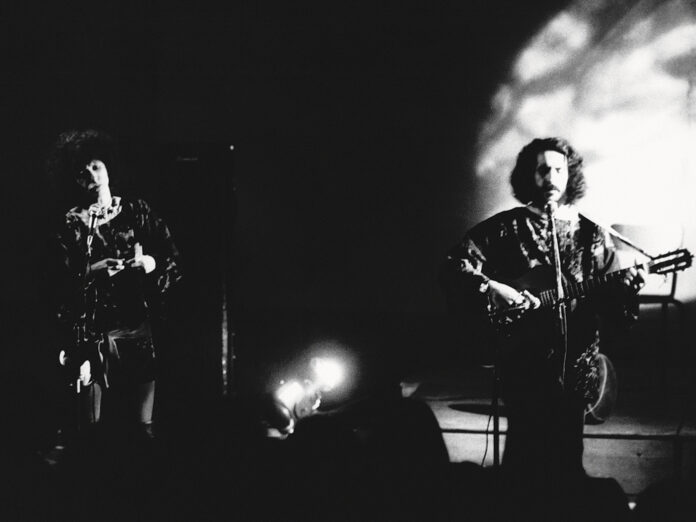
Trending Now
Hear a remastered version of “coyote” from joni mitchell’s the asylum albums (1976-1980), introducing can live 1973 – 1977, vampire weekend – only god was above us, ac/dc – reissues, neil young & crazy horse – fu##in up.
The concept behind Fantastic Voyage , compiled by Bob Stanley of St Etienne and Jason Wood from the British Film Institute , is simple: tracking the two-way flow of influence between David Bowie ’s Berlin-era albums and the German electronic and avant-rock that informed Bowie’s thinking at the time. It’s a smart conceit for a compilation, something that Stanley in particular has become exceptionally good at over the past decade. Indeed, the recent string of collections he’s pulled together for Ace Records are often sensitive mappings of discrete cultural scenes or imagined aesthetic collisions; while 2020’s Cafe Exil: New Adventures In European Music 1972-1980 pieced together what Bowie and Iggy might have been listening to in their favourite Kreuzberg haunt.
TALKING HEADS ARE ON THE COVER OF THE NEW UNCUT – HAVE A COPY SENT STRAIGHT TO YOUR HOME
It’s not hard to see the ways that Fantastic Voyage’s remit can be stretched, massaged and morphed. Some of the names here are to be expected – Holger Czukay , Cabaret Voltaire , The Associates – but some may land, initially, as quite a surprise: Daryl Hall , Peter Gabriel . It’s the latter inclusions that make Fantastic Voyage more valuable than a predictable hipster’s selection of ‘the right records’. Treating the Bowie-Berlin creative nexus as pliable material, Stanley and Wood offer other ways of thinking about how electronic music and rock went mutually mutant in the early ’80s.
The Hall contribution is one of the compilation’s most gorgeous moments: “ The Farther Away I Am ” is a late-night hymn, an intimist’s dream of a song, taken from his album Sacred Songs . Recorded in 1977 but not released until 1980, Sacred Songs is Hall’s masterpiece, made in collaboration with Robert Fripp . Indeed, Fripp understandably hovers over Fantastic Voyage as a kind of éminence grise: the taut and itchy “ Exposure ”, from Fripp’s album of the same name, is also included here, and he turns up on guitar on Peter Gabriel’s tortured “ No Self Control ”.
Gabriel’s contribution precedes the song that feels like Fantastic Voyage’s core, The Walker Brothers ’ “ Nite Flights ”. The moment where Scott Walker truly unshackles himself from the brothers’ lush, brooding balladry and goes fully existential, it’s still startling, 40 years on, a stealthy machine of a song, a warped hybrid of krautrock’s rhythmic monotony and stylised art-rock. Bowie’s “ Heroes ” was a reference point for Walker while recording his contributions to “Nite Flights”’s attendant album, and Bowie would repay the favour, decades later, covering it on 1993’s Black Tie White Noise .
Lest Fantastic Voyage come across as an exercise of reinforcing myths, the veneration of a gang of white intellectuals exoticising Berlin’s post-war ruins, Stanley and Wood are careful to bring in other voices. One of the highlights of Fantastic Voyage is the plasmic drift of Brigitte Fontaine and Areski ’s “ Patriarcat ”; another is Isabelle Mayereu ’s “ On A Trouvé… ”, from her chanson curio, Des Mot Étranges… ; Grauzone ’s “ Eisbar ” still feels like a beautiful anomaly in the landscape. And that’s the great art of Fantastic Voyage – drawing up new plans that allow different contexts for such strange, glorious architectures.
- Tagged Topics
- David Bowie
Latest Issue
The rolling stones – nrg stadium, houston, april 28, 2024, a david gilmour world exclusive, a can cd, beth gibbons, t bone burnett, slowdive and more in the new uncut, uncut – june 2024, introducing the ultimate music guide to nirvana, introducing the 500 greatest albums of the 1990s…ranked, uncut – may 2024, introducing…the 172-page definitive edition ultimate music guide to the smiths .
Subscribe to Uncut today and never miss an issue.
Save up to 26% when you subscribe online
Fantastic Voyage (1965) Richard Fleischer
Le voyage fantastique.
- Générique technique
- Générique artistique
Bibliographie
Générique technique, générique artistique, exploitation, dates de tournage, lieux de tournage.
- Etats-Unis : Los Angeles Sports Arena, Exposition Park, Los Angeles, Californie
- Monorail on Instagram
- Monorail on Twitter
- Monorail on Facebook
Your bag is currently empty.

Various Artists (Saint Etienne) Fantastic Voyage
Monorail Exclusive
Format Info
Our edition will come with an exclusive signed postcard.
By the turn of the 80s, the impact of David Bowie’s ground-breaking Berlin recordings – the synths, the alienation, the drily futuristic production – was being felt on music across Europe. What’s more, the records being made were reflecting back and influencing Bowie’s own work – 1979’s “Lodger” and 1980’s “Scary Monsters” owed a debt to strands of German kosmische (Holger Czukay), new electronica (Patrick Cowley, Harald Grosskopf), and the latest works from old friends and rivals like Robert Fripp, Peter Gabriel and Scott Walker, all of whom had been re-energised by the fizz of 1977.
Compiled by Saint Etienne’s Bob Stanley and the BFI’s Jason Wood, “Fantastic Voyage” is the companion album to their hugely successful “Café Exil” collection, which imagined the soundtrack to David Bowie and Iggy Pop’s trans-European train journeys in the mid-to-late seventies. “Fantastic Voyage” is what happened next.
Bowie’s influences and Bowie’s own influence were rebounding off each other as the 70s ended and the 80s began, notably in the emergent synthpop and new romantic scenes as well as through the music of enigmatic acts like the Associates and post-punk pioneers like Cabaret Voltaire.
Like “Low” and “Heroes”, some of the tracks on “Fantastic Voyage” are spiked with tension (Grauzone’s ‘Eisbär’) while some share those albums’ sense of travel (Simple Minds’ ‘Theme for Great Cities’, Ryuichi Sakamoto’s ‘Riot in Lagos’) and others find common ground with “Lodger’s” dark, subtle humour (Thomas Leer’s ‘Tight as a Drum’, Fripp’s ‘Exposure’).
This is the thrilling, adventurous sound of European music before the watershed moment when Bowie would abandon art-pop for America and the emerging world of MTV with “Let’s Dance” in 1983. “Fantastic Voyage” soundtracks the few brief years when the echo chamber of Bowie, his inspirations, and his followers created an exciting, borderless music that was more than ready for a challenge to Anglo American influences.
Fantastic Voyage – Various Artists (Saint Etienne) has been added to your bag.
- performances
- exhibitions
- bibliography
- text to image
- carl cryplant
- solo exhibitions
- group exhibitions
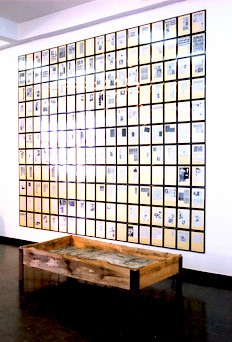
© 2024 Danny Devos | Powered by ProcessWire
Fantastic Voyage Various Artists (Saint Etienne)
Free delivery in the UK

By the turn of the 80s, the impact of David Bowie’s ground-breaking Berlin recordings – the synths, the alienation, the drily futuristic production - was being felt on music across Europe. What’s more, the records being made were reflecting back and influencing Bowie’s own work – 1979’s “Lodger” and 1980’s “Scary Monsters” owed a debt to strands of German kosmische (Holger Czukay), new electronica (Patrick Cowley, Harald Grosskopf), and the latest works from old friends and rivals like Robert Fripp, Peter Gabriel and Scott Walker, all of whom had been re-energised by the fizz of 1977.
Compiled by Saint Etienne’s Bob Stanley and the BFI’s Jason Wood, “Fantastic Voyage” is the companion album to their hugely successful “Café Exil” collection, which imagined the soundtrack to David Bowie and Iggy Pop’s trans-European train journeys in the mid-to-late seventies. “Fantastic Voyage” is what happened next.
Bowie’s influences and Bowie’s own influence were rebounding off each other as the 70s ended and the 80s began, notably in the emergent synthpop and new romantic scenes as well as through the music of enigmatic acts like the Associates and post-punk pioneers like Cabaret Voltaire.
Like “Low” and “Heroes”, some of the tracks on “Fantastic Voyage” are spiked with tension (Grauzone’s ‘Eisbär’) while some share those albums’ sense of travel (Simple Minds’ ‘Theme for Great Cities’, Ryuichi Sakamoto’s ‘Riot in Lagos’) and others find common ground with “Lodger’s” dark, subtle humour (Thomas Leer’s ‘Tight as a Drum’, Fripp’s ‘Exposure’).
This is the thrilling, adventurous sound of European music before the watershed moment when Bowie would abandon art-pop for America and the emerging world of MTV with “Let’s Dance” in 1983. “Fantastic Voyage” soundtracks the few brief years when the echo chamber of Bowie, his inspirations, and his followers created an exciting, borderless music that was more than ready for a challenge to Anglo American influences.
Track listing
Delivery & returns.
We offer free P&P to UK addresses. For all other territories packaging is free and postage is charged on a weight basis.
We use Royal Mail First Class for UK deliveries and standard Air Mail for all other territories, very large orders will usually be sent via parcelforce. You may cancel your order at any time prior to your order being dispatched by emailing us at orders@acerecords.com ensuring that you quote your name, address and order reference number or by telephoning +44 (0) 208 453 1311 between 9am and 5pm GMT/BST, Monday to Friday. Please note: As music downloads are dispatched immediately after purchase, there is no possibility of cancelling these orders.
In the event that any products supplied to you by us are damaged or defective, we agree to replace or repair the damaged or defective products or refund the amount you paid for such goods (including postage & packaging) providing you notify us (either via post at or e-mail: orders@acerecords.com ) and return the goods within 28 days of purchase. Physical goods should be sent back to us in the same condition you received them to: “Returns” Ace Records, Such Close, Letchworth Garden City SG6 1JF, United Kingdom. Music downloads should be returned to us via the e-mail address above including a copy of your notification.
You have the right to cancel your order within seven days of purchase, or seven days of receipt of the goods (whichever is the longer). If you choose to cancel your order, full payment will be returned to you. Returned items should be sent to: “Returns” c/o Ace Records, Such Close, Letchworth Garden City SG6 1JF, United Kingdom. Music downloads should be returned to us via the email address: orders@acerecords.com including a copy of your notice of cancellation and order number.
Customer reviews
Please enable JavaScript to view the comments powered by Disqus. comments powered by Disqus
Related products

Saint Etienne Present Songs For The Fountain Coffee Room
Various Artists (Saint Etienne)

Choctaw Ridge - New Fables of The American South 1968-1973

Bob Stanley & Pete Wiggs Present The Tears Of Technology

Folk, Funk & Beyond - The Arrangements Of John Cameron

London A To Z
Customers who bought this item also bought.

Fantastic Voyage

In The Light Of Time
Various Artists (In The Light Of Time)

Back To The Basics - The Chips Moman Songbook
Various Artists (Songwriter Series)

Cafe Exil - New Adventures In European Music 1972-1980

From The Archives
Rodion G.A.

Autonomy - The Productions Of Martin Rushent
Various Artists (Producer Series)

Richard Hawley's Jukebox
Various Artists (Richard Hawley)

Fell From The Sun

Incident At A Free Festival
Please note our website uses cookies to improve your experience. I understand. For more information see our Privacy Notice & Cookie Policy.
Customer services
- Delivery and Returns
- Terms and Conditions
- Privacy and Cookies
- Releases by month
- Staff profiles
- Company information


IMAGES
VIDEO
COMMENTS
Fantastic Voyage is a 1966 American science fiction adventure film directed by Richard Fleischer and written by Harry Kleiner, based on a story by Otto Klement and Jerome Bixby. The film is about a submarine crew who is shrunk to microscopic size and venture into the body of an injured scientist to repair damage to his brain.
Le Voyage fantastique est un tableau réalisé par le peintre espagnol Salvador Dalí en 1965. Cette œuvre sur papier fixée sur panneau et exécutée à la gouache , à l' aquarelle , à l' encre de Chine et au crayon est une composition dominée par un portrait surréaliste proche de l'esthétique du pop art et présentant dans le ...
Artist: Salvador Dali Tags: Lucas Collection, Original. 904.501.8146. Nicole Wolff. Gallery Director. Request A Quote. Biography. Cutter & Cutter Fine Art features one of the nation's largest collections of available Salvador Dali original paintings, etchings and lithographs.
Le voyage fantastic is an hallucinatory portrait made at the height of Dalí's so-called 'pop' period in New York in 1965. The painting was made as part of the promotion of the 1966 film 'Fantastic Voyage' starring Stephen Boyd, Donald Pleasence and Raquel Welch.
Art Cruickshank wins the Oscar for Special Visual Effects for Fantastic Voyage at the 39th Academy Awards, presented by Fred MacMurray and hosted by Bob Hope. Watch more of the 1967 Oscars: •...
The indefatigable artist has been the subject of exhibitions at the world's most prestigious institutions, from the Museum of Modern Art and Centre Pompidou to the Stedelijk Museum and Tate Modern. Salvador Dalí. Fantastic Voyage, 1965. Lithograph. 30 × 22 in | 76.2 × 55.9 cm. Edition 137/300.
The Tom Joyner Foundation Fantastic Voyage 2023 was SOLD OUT! Call (214)495-1963 to book your 2024 cabin today! Call Center Hours | Monday - Friday 8am - 8pm CST. Saturday 10am - 2pm CST.
Salvador Dalí | Fantastic Voyage (1965) | MutualArt. Artists > > Fantastic Voyage. SAVE ARTWORK FOLLOW ARTIST. Salvador Dalí. Fantastic Voyage , 1965. lithograph in colors. Prints & Graphic Art. 30 h × 22 w in 76 × 56 cm. Signed, number 92 from the edition of 300. Provenance and Literature. Estimate. Realized Price. +2% above mid-estimate.
ARTIST: Salvador Dali. TITLE: Fantastic Voyage. MEDIUM: Lithograph. SIGNED: Hand Signed. EDITION NUMBER: 139/300. MEASUREMENTS: 32" x 21". YEAR: 1965. CONDITION: Excellent. Salvador Dali, Fantastic Voyage, lithographie proposé par Fine Art Acquisitions à vendre sur le portail d'art Amorosart.
View Fantastic Voyage by Salvador Dalí on artnet. Browse upcoming and past auction lots by Salvador Dalí.
More a spin-off from Fantastic Voyage (1 above) than a sequel, the series was reportedly originally meant to be a live-action programme developed by teleplay authors William Read Woodfield and Allan Balter. This idea was scrapped, presumably due to cost considerations; 20th Century Fox settled instead for an animated series slanted towards younger audiences, with an entirely new crew.
Titre : Le Voyage fantastique; Titre original : Fantastic Voyage; Réalisation : Richard Fleischer; Scénario : Harry Kleiner et David Duncan, d'après une histoire de Otto Klement et Jay Lewis Bixby; Musique : Leonard Rosenman; Photographie : Ernest Laszlo; Montage : William B. Murphy (en) Décors : Walter M. Scott et Stuart A. Reiss
99+ Photos. Adventure Sci-Fi. When a blood clot renders a scientist comatose, a submarine and its crew are shrunk and injected into his bloodstream in order to save him. Director. Richard Fleischer. Writers. Harry Kleiner. David Duncan. Otto Klement. Stars. Stephen Boyd. Raquel Welch. Edmond O'Brien. See production info at IMDbPro. RENT/BUY.
No one can embark on a fantastic voyage alone, so come join us and make it your own. Here, we are all captains. | Artists: bangersonly.com, Now That's What I Call Bootlegs Fantastic Edits, Fantastic Voyage After Dark, Fantastic Tapes, Justin Jay, Danny Goliger, Benny Bridges, Antoinette Van Dewark, Ulf Bonde, Sam von Horn, Ardalan, Romain FX ...
Explore the tracklist, credits, statistics, and more for Fantastic Voyage (New Sounds For The European Canon 1977-1981) by Various. Compare versions and buy on Discogs
The concept behind Fantastic Voyage, compiled by Bob Stanley of St Etienne and Jason Wood from the British Film Institute, is simple: tracking the two-way flow of influence between David...
" Fantastic Voyage " is a song written by David Bowie and Brian Eno for the 1979 album Lodger. It has almost exactly the same chord sequence as "Boys Keep Swinging", from the same album. It has also appeared as the B-side to the "Boys Keep Swinging" and "Peace on Earth/Little Drummer Boy" singles, and the US edition of "D.J.". Recording.
Fantastic Voyage - Fiche Film - La Cinémathèque française. Pays de production. Sortie en France. Procédé image. Durée. Distributeur. Générique technique. |. Générique artistique.
Compiled by Saint Etienne's Bob Stanley and the BFI's Jason Wood, "Fantastic Voyage" is the companion album to their hugely successful "Café Exil" collection, which imagined the soundtrack to David Bowie and Iggy Pop's trans-European train journeys in the mid-to-late seventies. "Fantastic Voyage" is what happened next.
With Fantastic Voyage through the Body of an Artist, KIOSK presents an exhibition by one of the most idiosyncratic Belgian artists: Danny Devos, aka DDV. DDV's oeuvre is characterized by his perseverance and versatility.
Release history. In popular culture. References. Fantastic Voyage (Coolio song) " Fantastic Voyage " is a song by American rapper Coolio, released in March 1994 by Tommy Boy Records as the third single from his debut album, It Takes a Thief (1994).
Fantastic Voyage Various Artists (Saint Etienne) £27.00. Buy Now. Free delivery in the UK. Save item. Genre: Eclectic. Label: Ace Records. Format: LP. Catalogue Id: XXQLP2 124.